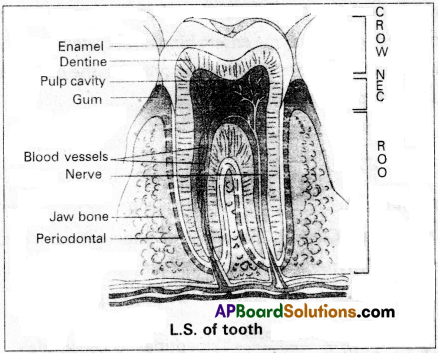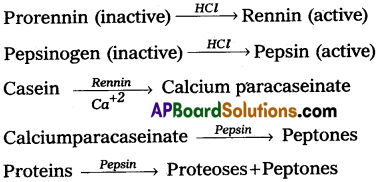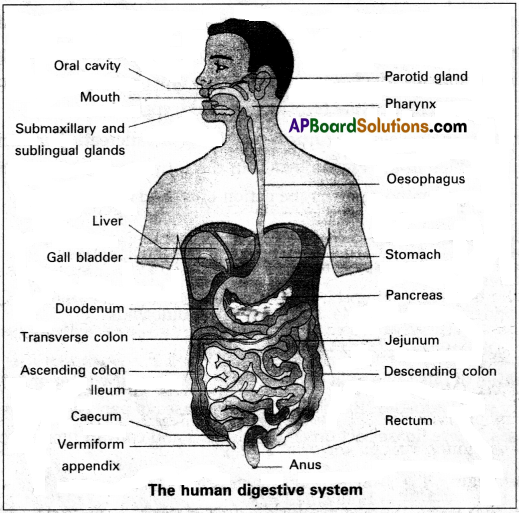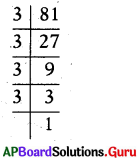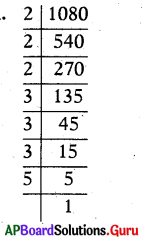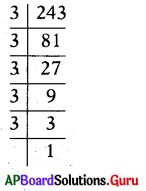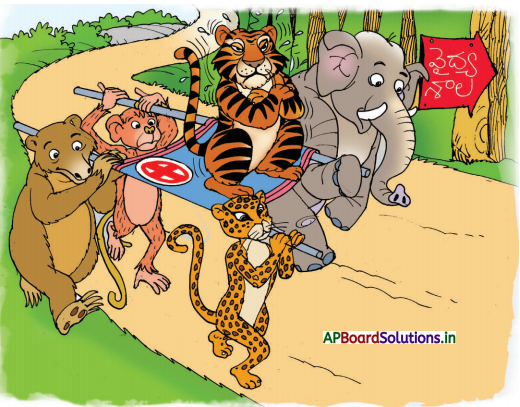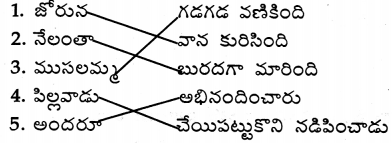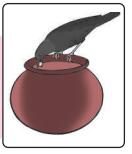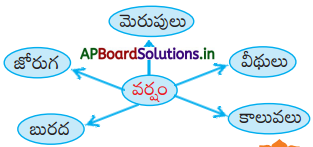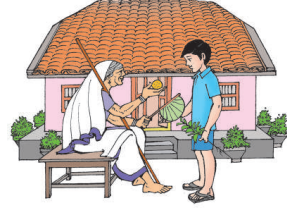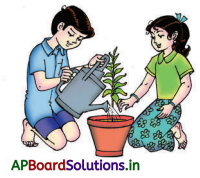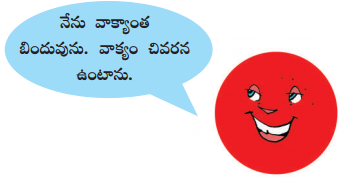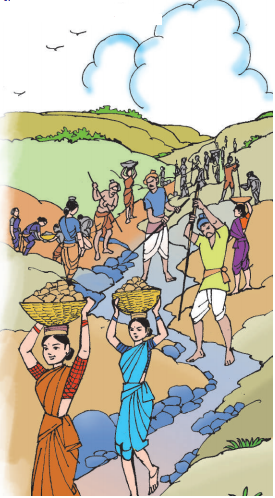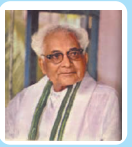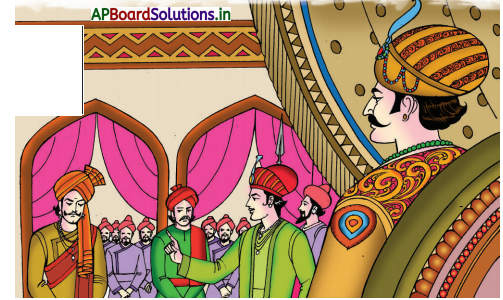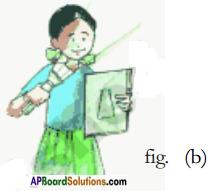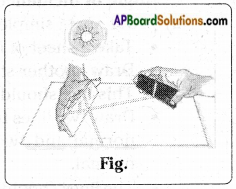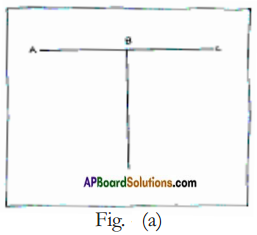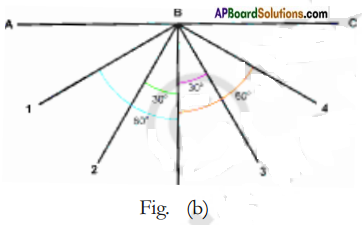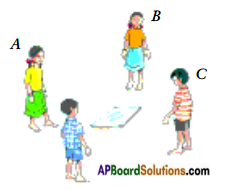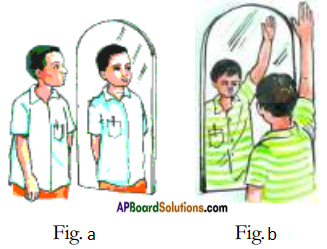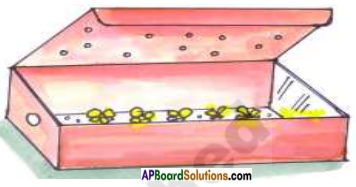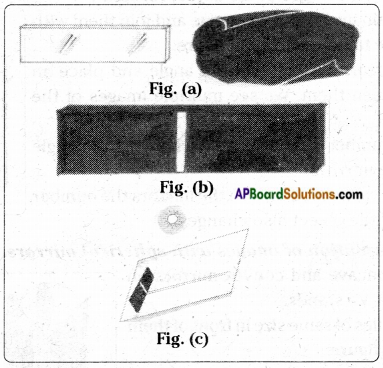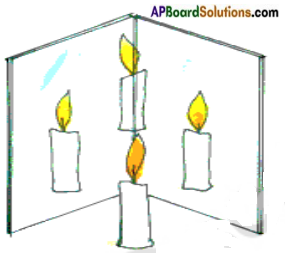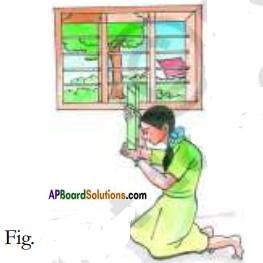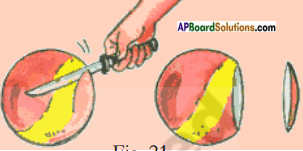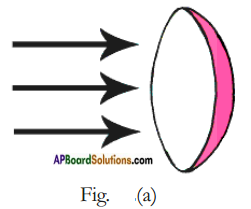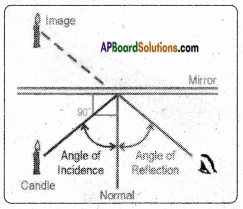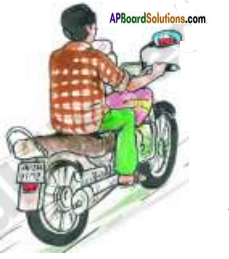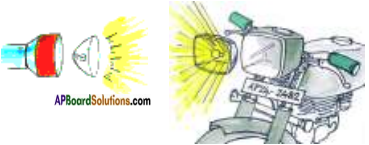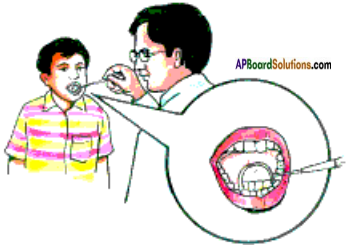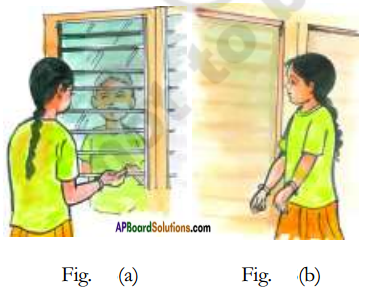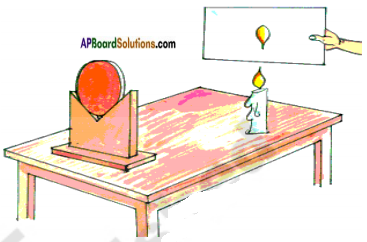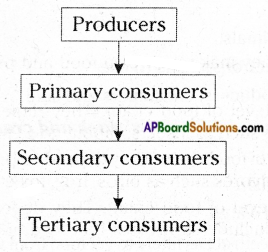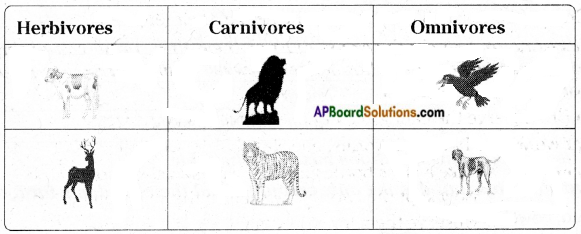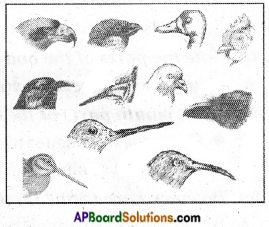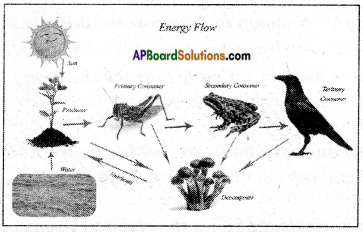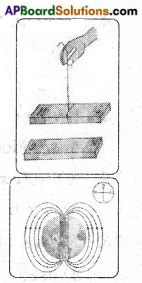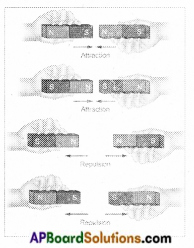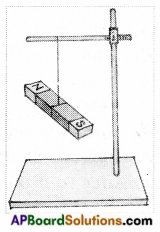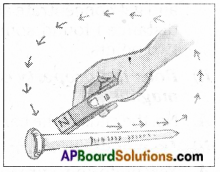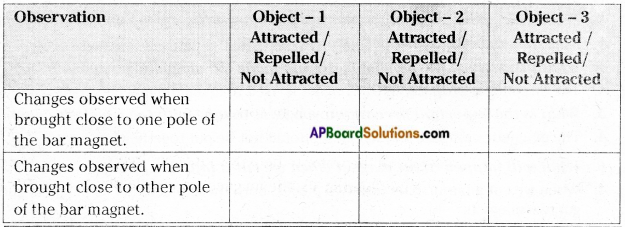These AP 10th Class Social Studies Important Questions 20th Lesson ప్రపంచ యుద్దాల తరువాత ప్రపంచం, భారతదేశం will help students prepare well for the exams.
AP Board 10th Class Social 20th Lesson Important Questions and Answers ప్రపంచ యుద్దాల తరువాత ప్రపంచం, భారతదేశం
10th Class Social 20th Lesson ½ Mark Important Questions and Answers in Telugu Medium
1. రెండవ ప్రపంచ యుద్ధం వలన ప్రపంచంలోకెల్లా శక్తివంతమైన దేశంగా ఆవిర్భవించిన దేశమేది?
జవాబు:
అమెరికా.
2. ఐక్యరాజ్యసమితి ఏర్పడినప్పుడు సభ్యదేశాల సంఖ్య ఎంత?
జవాబు:
54.
3. ఐక్యరాజ్యసమితి ప్రధాన కార్యాలయం ఏ నగరంలో కలదు?
జవాబు:
న్యూయార్క్
4. UNESCO ప్రధాన కార్యాలయం ఏ నగరంలో ఉంది?
జవాబు:
పారిస్.
5. UNICEF ప్రధాన కార్యాలయం ఏ నగరంలో ఉంది?
జవాబు:
న్యూయార్క్

6. WHO ప్రధాన కార్యాలయం ఏ నగరంలో ఉంది?
జవాబు:
జెనీవా.
7. అంతర్జాతీయ న్యాయస్థానం ప్రధాన కార్యాలయం ఏ నగరంలో ఉంది?
జవాబు:
హేగ్.
8. యుద్ధం, శాంతికి సంబంధించిన నిర్ణయాలు UNO లోని ఏ అంగం తీసుకుంటుంది?
జవాబు:
భద్రతా మండలి.
9. కాంగోలో హత్యకు గురైన కమ్యూనిస్ట్ నాయకుడు ఎవరు?
జవాబు:
పాట్రిక్ లుమాంబా.
10. అంగోలా ఎవరి వలస రాజ్యం?
జవాబు:
పోర్చుగల్.
11. అంతరిక్షంలోకి వెళ్ళిన మొదటి వ్యక్తి ఎవరు? ఏ దేశస్థుడు?
జవాబు:
యూరి గగారిన్, రష్యా.

12. తొలిసారిగా చంద్రమండలంపై కాలుమోపినది ఎవరు? ఏ దేశస్థుడు?
జవాబు:
నీల్ ఆర్మ్ స్ట్రాంగ్, అమెరికా.
13. సూయజ్ కెనాల్ ను జాతీయం చేసిన ఈజిప్టు అధ్యక్షుడు ఎవరు?
జవాబు:
గమల్. అబెల్ నాసర్
14. 1965లో భారత్ – పాకిస్తాన్ల మధ్య యుద్ధ విరమణకు కృషిచేసిన UNO కార్యదర్శి ఎవరు?
జవాబు:
యుథాంట్.
15. 1948లో యూదుల కోసం ఏర్పడిన దేశ మేది?
జవాబు:
ఇజ్రాయిల్.
16. తూర్పు పాకిస్తాన్ నుంచి ముజిబుర్ రెహ్మాన్ మద్దతు దారులు ఏ పేరుతో విముక్తి పోరాటాన్ని చేపట్టారు?
జవాబు:
ముక్తి బాహిని
17. అలీనోద్యమ మొదటి సమావేశం 1961లో ఎక్కడ జరిగింది?
జవాబు:
బెల్ గ్రేడ్.
18. లాటిన్ అమెరికా దేశాలలో సామ్యవాద వ్యవస్థను నిర్మించటానికి కృషిచేసిన ప్రముఖ నాయకుడు ఎవరు?
జవాబు:
ఫిడెల్ కాస్ట్రో.
19. శాశ్వత సభ్య దేశాలకు గల ప్రత్యేక (తిరస్కరించే) అధికారాన్ని ఏమంటారు?
జవాబు:
వీటో అధికారం.
20. యూదులకు ప్రత్యేక దేశాన్ని నిర్మించటానికి యూదులలో మొదలైన ఉద్యమం ఏది?
జవాబు:
జియానిస్ట్ ఉద్యమం.

21. నాటో (NATO)కు వ్యతిరేకంగా రష్యా ఏర్పాటు చేసిన కూటమి ఏది?
జవాబు:
వార్సా (WARSAW) కూటమి.
22. మూడవ ప్రపంచ దేశాలు అని ఏ దేశాలను పిలుస్తారు?
జవాబు:
అలీన దేశాలను.
23. భారత్ లో ఆశ్రయం పొందిన టిబెట్ బౌద్ధ మత నాయకుడు ఎవరు?
జవాబు:
దలైలామా
24. USSR రద్దును ప్రకటించిన రష్యా అధ్యక్షుడు ఎవరు?
జవాబు:
బొరిస్ ఎల్సిన్.
25. కాంగో ఏ దేశపు వలస రాజ్యం?
జవాబు:
బెల్జియం
26. ఇజ్రాయిల్కు చెందిన క్రీడాకారులను చంపిన ఘటన జరిగిన సంవత్సరం ఏది?
జవాబు:
1972
27. NATOని విస్తరింపుము.
జవాబు:
ఉత్తర అట్లాంటిక్ సంధి వ్యవస్థ.

28. SEATOని విస్తరింపుము.
జవాబు:
సౌత్ ఈస్ట్ ఏషియన్ టీ ఆర్గనైజేషన్.
29. CENTOని విస్తరింపుము.
జవాబు:
సెంట్రల్ ట్రీటీ ఆర్గనైజేషన్.
30. PLOని విస్తరింపుము.
జవాబు:
పాలస్తీనా విముక్తి సంఘం.
31. తాలిబన్లు అనే తీవ్రవాదులు ఏ దేశానికి చెందినవారు?
జవాబు:
ఆఫ్ఘనిస్తాన్
32. UNOలో ప్రస్తుతం (2014 నాటికి) ఎన్ని సభ్య దేశాలు కలవు?
జవాబు:
193.
33. యూరప్, ఆసియా మధ్య ప్రాంతాన్ని ఏమంటారు?
జవాబు:
పశ్చిమ ఆసియా.
34. ఏ సంవత్సరంలో ఇరాన్లో విప్లవం సంభవించింది?
జవాబు:
1979.
35. USSR ను ఏ సంవత్సరంలో రద్దు పరుస్తున్నట్లు ప్రకటించారు?
జవాబు:
1991.
36. PLO నాయకుడు ఎవరు?
జవాబు:
యాసర్ అరాఫత్.

37. 1968లో ఇరాక్ లో నియంతృత్వ ప్రభుత్వాన్ని ఏర్పాటు చేసిన సైనిక నియంత ఎవరు?
జవాబు:
సద్దాం హుస్సేన్.
38. పంచశీల సిద్ధాంత రూపకర్త ఎవరు?
జవాబు:
J.L. నెహ్రు
39. భారత, చైనాల మధ్య సరిహద్దు రేఖ ఏది?
జవాబు:
మెక్ మోహన్ రేఖ.
40. POK అనగా?
జవాబు:
పాక్ ఆక్రమిత కాశ్మీర్.
41. తూర్పు పాకిస్తాన్ను ప్రస్తుతం ఏమని పిలుస్తున్నాం?
జవాబు:
బంగ్లాదేశ్.
42. శ్రీలంక ఏ సంవత్సరంలో స్వాతంత్ర్యం పొందింది?
జవాబు:
1948.
43. తాష్కెంట్ ఒప్పందం భారత్ మరియు ఏ దేశానికి మధ్య జరిగింది?
జవాబు:
పాకిస్తాన్.

44. శ్రీలంక ఏ మహాసముద్రంలోని ద్వీప దేశం?
జవాబు:
హిందూ
45. భద్రతా మండలిలో ఎన్ని దేశాలు శాశ్వత సభ్యదేశాలుగా ఉంటాయి?
జవాబు:
అయిదు (5).
46. మత ప్రమేయం లేని రాజ్యంను ఏమంటారు?
జవాబు:
లౌకిక దేశం.
47. రెండవ ప్రపంచ యుద్ధ కాలంలో అమెరికా అధ్యక్షుడు ఎవరు?
జవాబు:
F.D. రూజ్వెల్ట్.
48. క్రింది ఏ సందర్భాలలో మాత్రమే UNO దేశాల అంతర్గత వ్యవహారాలలో జోక్యం చేసుకుంటుంది?
i) తీవ్ర మానవ హక్కుల ఉల్లంఘన
ii) ప్రపంచ శాంతికి ముప్పు.
iii) రాజకీయ ఆందోళనలు
జవాబు:
(i) & (ii)
49. ఐక్యరాజ్య సమితిలో ఎన్ని ప్రధాన సంస్థలు (అంగాలు) ఉన్నాయి?
జవాబు:
ఆరు.
50. ఐక్యరాజ్య సమితి ముఖ్య అధికారి ఎవరు?
జవాబు:
సెక్రటరీ జనరల్.
51. ప్రచ్ఛన్న యుద్ధ దశ ఏది?
జవాబు:
1945 – 1991

52. కాంగో స్వాతంత్రం పొందిన సంవత్సరం ఏది?
జవాబు:
1960.
53. రష్యా, ఆఫ్ఘనిస్తాన్ పై ఏ సంవత్సరంలో దాడి చేసింది?
జవాబు:
1971.
54. NATO ఏ సంవత్సరంలో ఏర్పడింది?
జవాబు:
1949.
55. నాటో, సీటో, సెంటో, వార్సాకూటమి లలో భిన్నంగా ఉన్న దానిని గుర్తించండి.
జవాబు:
వార్సా కూటమి.
56. ప్రచ్ఛన్న యుద్ధ కాలంలో కమ్యూనిస్ట్ కూటమి యొక్క సైనిక సంధి ఏది?
జవాబు:
వార్సా సంధి.
57. మానవులచే అంతరిక్షంలోకి పంపబడిన తొలి కృత్రిమ ఉపగ్రహం పేరేమి?
జవాబు:
స్పుట్నిక్.
58. U2 అనగా
జవాబు:
అమెరికా గూఢచర్య విమానం.

59. NAM అనగా?
జవాబు:
అలీనోద్యమం (నాన్ అలైన్ మెంట్ మూవ్ మెంట్)
60. బాండుంగ్ సమావేశం ఏ సంవత్సరంలో జరిగింది?
జవాబు:
1955.
61. మొదటి ఆసియా – ఆఫ్రికా సమావేశం ఎక్కడ జరిగింది?
జవాబు:
బాండుంగ్.
62. పశ్చిమాసియా సంక్షోభం ప్రధానంగా ఎవరెవరికి చెందినది?
జవాబు:
అరబ్బులు, యూదులు.
63. రెండవ ప్రపంచ యుద్ధానికి ముందు పాలస్తీనా ఎవరి ఆధీనంలో ఉండేది?
జవాబు:
బ్రిటన్.
64. యూదులు, క్రైస్తవులు, ముస్లింలకు పవిత్రమైన ప్రాంతం ఏది?
జవాబు:
జెరూసలెం.
65. యూదుల వాగ్దాత్తా భూమి ఏది?
జవాబు:
పాలస్తీనా.

66. ఇజ్రాయిల్ పై దాడి చేయటానికి అరబ్బులను ఏకం చేయటానికి ప్రయత్నించినది ఎవరు?
జవాబు:
నాసర్.
67. ఆశ్వాన్ డామ్ ఏ నదిపై నిర్మించబడింది?
జవాబు:
నైలునది.
68. ప్రపంచ వాణిజ్య కేంద్రం ఎక్కడ ఉంది?
జవాబు:
న్యూయార్క్
69. USSR లో (రష్యాలో) గ్లాస్ నోస్తే, పెరిస్తోయికా వంటి సంస్కరణలను ప్రారంభించింది ఎవరు?
జవాబు:
మిహయిల్ గోర్బచెవ్
70. సిమ్లా ఒప్పందంపై సంతకాలు చేసినవారు ఎవరు?
జవాబు:
జుల్ఫికర్ ఆలి భుట్టో – ఇందిరాగాంధీ.
71. పంచశీల ఒప్పొందాన్ని చేసుకున్న దేశాలు ఏవి?
జవాబు:
భారత్ – చైనా
72. క్రింది వానిని సరిగా జతపరచండి.
i) సద్దాం హుస్సేన్ ( ) a) టిబెట్
ii) నాసర్ ( ) b) ఈజిప్టు
iii)దలైలామా ( ) c) ఇరాక్
iv) గోర్బచెవ్ ( ) d) రష్యా
జవాబు:
i – c, ii – b, iii – a, iv – d

73. క్రింది వానిని సరిగా జతపరచండి.
i) ఎస్ అల్లెండి ( ) a) చిలీ
ii) చేగువేరా ( ) b) లాటిన్ అమెరికా
iii)లుమంబా ( ) c) కాంగో
జవాబు:
i – a, ii – b, iii – c
74. టిబెటను 1950లో ఆక్రమించిన దేశం ఏది?
జవాబు:
చైనా.
75. కార్గిల్ యుద్ధం జరిగిన సంవత్సరం ఏది?
జవాబు:
1999.
76. చైనా భారతదేశంపై ఏ సంవత్సరంలో దాడి చేసింది?
జవాబు:
1962.
77. ఏ దేశం స్వాతంత్ర్యానంతరం భారతదేశంతో 25 సంవత్సరాల శాంతి సంధి చేసుకుంది?
జవాబు:
బంగ్లాదేశ్.
78. “యుద్ధం వలన మనం ప్రపంచంలోకెల్లా శక్తివంతమైన దేశంగా ఆవిర్భవించాం. చరిత్ర మొత్తంలోనే ఇంతటి శక్తివంతమైన దేశం మరొకటిలేదు”. ఈ వ్యాఖ్య చేసింది ఎవరు?
జవాబు:
హారీ ట్రుమన్ (అమెరికా అధ్యక్షుడు)
79. ప్రస్తుత ఐక్యరాజ్యసమితి సెక్రటరీ జనరల్ ఎవరు?
జవాబు:
ఆంటోనియా గెటరస్.
80. అమెరికా, జర్మనీ, ఫ్రాన్స్, చైనాలలో భిన్నమైనది ఏది?
జవాబు:
జర్మనీ.
81. మొదటి జతలోని సంబంధం ఆధారంగా రెండవ జతను పూరించండి.
బెల్జియం : కాంగో : : పోర్చుగల్ : ?
జవాబు:
అంగోలా.

82. మొదటి ప్రపంచ యుద్ధం : నానాజాతి సమితి : : రెండవ ప్రపంచ యుద్ధం 😕
జవాబు:
ఐక్యరాజ్య సమితి.
83. NATO : అమెరికా : : వార్సా కూటమి 😕
జవాబు:
రష్యా
84. లిబియా : గఢాఫి : : ఇరాక్ : ?
జవాబు:
సద్దాం హుస్సేన్
85. CIA ఏ దేశపు గుడచారి సంస్థ?
జవాబు:
అమెరికా.
86. ఆఫ్ఘనిస్తాన్ నుంచి రష్యా తన సైన్యాలను ఎప్పుడు విరమించుకుంది?
జవాబు:
1985 లో
87. అలీనోద్యమంకి సంబంధించిన సమాచారం పూరించండి.
మొదటి సమావేశం – 1961
1961లో సభ్యదేశాలు – 25
2012 నాటికి సభ్య దేశాలు -?
జవాబు:
120.
88. క్రింది వానిని సరియైన కాలక్రమంలో ఉంచండి.
i) ఈజిప్టుపై ఇజ్రాయిల్ దాడి
ii) పాలస్తీనా విముక్తి సంఘం ఏర్పాటు
iii) మ్యూనిచ్ ఒలంపిక్స్.
iv) యాసర్ అరాఫత్ మరణం.
జవాబు:
i, ii, iii & iv

89. 2001 సెప్టెంబర్ 11 న ప్రపంచ వాణిజ్య కేంద్రంపై దాడి చేసిన ఉగ్రవాద సంస్థ ఏది?
జవాబు:
ఆల్ఖైదా.
90. క్రింది వానిలో సరికాని జతను గుర్తించి రాయండి.
→ పాలస్తీనా విముక్తి సంఘ అధ్యక్షుడు – అరాఫత్
→ USSR చివరి అధ్యక్షుడు – గోర్బచెవ్.
→ చైనా గణతంత్రం – చియాంగ్ కై షేక్
→ గోర్బచెవ్ కి వ్యతిరేకంగా తిరుగుబాటు- బోరిస్ ఎల్సిన్
జవాబు:
గోర్బచెవ్ కి వ్యతిరేకంగా తిరుగుబాటు – బోరిస్ ఎల్సిన్.
91. తాష్కెంట్ ఎక్కడ ఉంది?
జవాబు:
ఉజ్బెకిస్తాన్లో
92. క్రింది వానిని సరిగా జతపరచండి.
i) కమ్యూనిస్ట్ శిబిరం ( ) a) USSR
ii) పెట్టుబడిదారీ శిబిరం ( ) b) USA
iii)తటస్థ శిబిరం ( ) c) NAM
iv) తీవ్రవాద శిబిరం ( ) d) PLO
జవాబు:
i – a, ii – b, iii – c, iv – d
93. బ్రహ్మపుత్ర – గంగా నదుల విషయంలో ఏ దేశంతో మనం వివాదం కల్గి ఉన్నాం?
జవాబు:
బంగ్లాదేశ్ తో
94. ఐక్యరాజ్య సమితి ఎప్పుడు ఏర్పడింది (తేది)?
జవాబు:
1945, అక్టోబర్ 24న

95. 1947లో టర్కీ గ్రీకు దేశాలలో కమ్యూనిస్ట్ వ్యతిరేక శక్తులకు మద్దతు నిచ్చింది ఎవరు?
జవాబు:
హరీట్రుమన్ (అమెరికా)
96. అస్వాన్ ఆనకట్ట కట్టినందుకు ఈజిప్టుకు ఆర్థిక సహాయాన్ని నిలిపివేసిన దేశం ఏది?
జవాబు:
అమెరికా.
97. 1948, 1962, 1965, 1971 సంవత్సరాలలో ఏ సంవత్సరం భారత్ – పాకిస్తాన్ యుద్ధం జరగలేదు?
జవాబు:
1962 లో
98. క్రింది వాక్యాలను పరిగణించండి.
i) తూర్పు పాకిస్తాన్లో ముజిబుర్ రెహ్మన్ మద్దతు దారులు “ముక్తి బాహిని” పేరుతో ఉద్యమాన్ని చేపట్టారు.
ii) భారత ప్రధాని ఇందిరా గాంధీ దీనికి మద్దతుగా నిలిచింది.
పై వాక్యా లలో సరైనది ఏది?
A) (i) మాత్రమే
B) (ii) మాత్రమే
C) (i) మరియు (ii)
D) రెండూ కావు
జవాబు:
C) (i) మరియు (ii)
99. శ్రీలంకకు సంబంధించిన క్రింది వాక్యాలను పరిగణించండి.
i) 1948లో స్వాతంత్ర్యం పొందింది.
ii) శ్రీలంకలో తమిళభాష మాట్లాడేవారు అధిక సంఖ్యలో ఉన్నారు.
పై వాక్యా లలో సరైనది ఏది?
A) (i) మాత్రమే
B) (ii) మాత్రమే
C) (i) మరియు (ii)
D) రెండూ కావు
జవాబు:
A (i) మాత్రమే
100. 1965లో భారతదేశ ప్రధాన మంత్రి ఎవరు?
జవాబు:
లాల్ బహాదుర్ శాస్త్రి.

101. క్రింది వానిలో సరికాని జతను గుర్తించి రాయండి.
→ క్వాచక్రూమా – కెన్యా
→ మార్షల్ టీటో – యుగోస్లావియా
→ సుకర్నో – ఇండోనేషియా
→ నాజర్ – ఇజ్రాయిల్
జవాబు:
నాజర్ – ఇజ్రాయిల్
102. USSRలో తీవ్ర మార్పులు తెచ్చి, మరింత పారదర్శకంగా చేసి దాని రాజకీయాలను మార్చటానికి ప్రయత్నించినది
జవాబు:
గోర్బచెవ్
103. 1954 ఏప్రిల్ 29న పంచశీల ఒప్పందంపై సంతకాలు చేసినది ఎవరు?
జవాబు:
చౌ-ఎన్-లై-నెహ్రూ
104. లడఖ్ ప్రాంతంలోని ఆక్సాయి-చిన్ ప్రాంతం, అరుణాచల్ ప్రదేశ్ లోని చాలా ప్రాంతం తమదేనంటున్న దేశం ఏది?
జవాబు:
చైనా
105. 1965లో పాకిస్తాన్ నియంత ఎవరు?
జవాబు:
బెనజీర్ భుట్టో
106. ‘క్రింది స్టేట్మెంట్లను పరిశీలించి, సరియైన సమాధానము ఎంచుకోండి.
I. రెండవ ప్రపంచ యుద్ధంలో రష్యా, ఇతర ఐరోపాదేశాలు ఆర్థికంగా నష్టపోయాయి.
II. అమెరికాకు జరిగిన నష్టం తక్కువ, వాస్తవానికి ఆర్థిక మాంద్యం కారణంగా ఏర్పడిన ఆర్థిక సంక్షోభం నుంచి బయటపడటానికి రెండవ ప్రపంచ యుద్ధం దోహదపడింది.
A) I & II సరియైనవి
B) I & II సరియైనవి కావు
C) I మాత్రమే సరియైనది
D) II మాత్రమే సరియైనది
జవాబు:
A) I & II సరియైనవి
107. “యుద్ధం వలన మనం ప్రపంచంలో కెల్లా శక్తివంతమైన దేశంగా ఆవిర్భవించాం – చరిత్ర మొత్తంలోనే ఇంతటి శక్తిమంతదేశం మరొకటి లేదు” – అమెరికా అధ్యక్షుడు హారీ ట్రుమన్ ఈ వ్యాఖ్యలను ఎందుకు చేసాడు?
జవాబు:
యుద్ధకాలంలో అమెరికా ఎక్కువ ఉపాధి, అధిక ఉత్పాదకత సాధించటం వల్ల

108. “రెండవ ప్రపంచ యుద్ధ వినాశనానికి గురైన దేశాలు తమ ఆర్థిక పరిస్థితిని పునఃనిర్మించుకుంటున్న క్రమంలో ప్రపంచం కొత్త ప్రక్రియలను చూసింది.” ఈ ప్రక్రియలలో ముఖ్యమైనది కానిది.
A) ఐక్యరాజ్యసమితి ఏర్పాటు
B) పెట్టుబడిదారీ విధానము
C) ప్రచ్ఛన్న యుద్ధం
D) వలసపాలన నుంచి విముక్తి
జవాబు:
(B) పెట్టుబడిదారీ విధానము
109. ఐక్యరాజ్యసమితి యొక్క ప్రధాన ఉద్దేశం.
జవాబు:
శాశ్వత శాంతి, మానవ అభివృద్ధి
110. క్రిందివానిలో సరియైన జత కానిది.
A) అంతర్జాతీయ న్యాయస్థానం – ది హేగ్
B) ప్రపంచ ఆరోగ్య సంస్థ – జెనీవా
C) UNESCO – పారిస్
D) UNICEF – వాషింగ్టన్
జవాబు:
D) UNICEF – వాషింగ్టన్
111. క్రింది స్టేట్మెంట్లను పరిశీలించి, సరియైన సమాధానము ఎంచుకోండి.
I. యుద్ధం, శాంతికి సంబంధించిన నిర్ణయాలు భద్రతా సమితిలో తీసుకుంటారు.
II. దీనిలో 5 శాశ్వత సభ్య దేశాలకు ప్రత్యేకహోదా ఉంది.
III. భద్రతా సమితి నిర్ణయాలను ఈ 5 దేశాలలో ఏ ఒకటైనా జోక్యం చేసుకుని తిరస్కరించవచ్చు.
A) I, II & III సరియైనవి
B) I, II మాత్రమే సరియైనవి
C) II, III మాత్రమే సరియైనవి
D) I, III మాత్రమే సరియైనవి
జవాబు:
A) I, II & III సరియైనవి
112. క్రింది స్టేట్ మెంట్లను పరిశీలించి, సరియైన సమాధానము ఎంచుకోండి.
I. సమానత్వం అన్న భావన, ప్రభుత్వ నియంత్రిత అభివృద్ధి; ఈ సిద్ధాంతాలను వ్యతిరేకించే వాళ్ల అణచివేత వంటి వాటిని అమెరికా అవలంభించింది.
II. పలుపార్టీల ప్రజాస్వామ్యం ప్రైవేటు పెట్టుబడు దారుల నియంత్రణలో అభివృద్ధి అన్న భావాలను రష్యా ప్రోత్సహించింది.
A) I & II సరియైనవి
B) I & II సరియైనవి కావు
C) Iమాత్రమే సరియైనది
D) II మాత్రమే సరియైనది
జవాబు:
B) I & II సరియైనవి కావు

113. ఈ క్రింది వానిలో సరియైన వ్యాఖ్య కానిది
A) బెల్జియం వలస పాలన కింద ఉన్న కాంగోకి 1960లో స్వాతంత్రం వచ్చింది.
B) పోర్చుగల్ వలస పాలన కింద ఉన్న అంగోలాకి 1975లో స్వాతంత్రం వచ్చింది.
C) లాటిన్ అమెరికాలో ఫిడేల్ క్యాస్ట్రో సామ్యవాద వ్యవస్థని నిర్మించటానికి కృషి చేశాడు.
D) చిలీలో ఎస్. అల్లెండీ ప్రభుత్వాన్ని కమ్యూనిస్ట్ శక్తులు పడదోసాయి.
జవాబు:
D) చిలీలో ఎస్. అల్లెండీ ప్రభుత్వాన్ని కమ్యూనిస్ట్ శక్తులు పడదోసాయి.
114. సైనిక ఒప్పందాల ద్వారా అగ్రరాజ్యాల ప్రభావ పరిధి పెరిగి వాటికి అందుబాటులోకి రాని అంశం.
A) చమురు, ఖనిజాలు వంటి కీలక వనరులు
B) సైనిక స్థావరాల ఏర్పాటు
C) వివిధ సంస్కృతుల సమ్మేళనం గావించబడటం
D) అగ్రదేశాల వజాల వ్యాప్తి
జవాబు:
C) వివిధ సంస్కృతుల సమ్మేళనం గావించబడటం
115. క్రింది స్టేట్ మెంట్లను పరిశీలించి, సరియైన సమాధానము ఎంచుకోండి.
I. మొదటి ఉపగ్రహం అయిన స్పుట్నిక్ ని రష్యా ప్రయోగించింది.
II. అంతరిక్షంలోకి వెళ్ళిన మొదటి వ్యక్తి యూరిగగారిన్ని రష్యా పంపించింది.
III. నీల్ ఆర్న్ స్ట్రాంగ్ ను చంద్రమండలం మీదకి 1969లో రష్యా పంపింది.
A) I, II & III సరియైనవి
B) I, II సరియైనవి
C) II, III సరియైన
D) I, III సరియైనవి
జవాబు:
B) I, II సరియైనవి
116. కొత్తగా స్వతంత్రం పొందిన దేశాలు అభద్రతా భావంతో కూడిన పరిస్థితుల నుంచి మార్పు కావాలని కోరుకున్నాయి, ఈ ఉద్దేశంతో నిర్వహించిన సమావేశం.
జవాబు:
బాండుంగ్ సమావేశం
117. అలీనోద్యమం (NAM)కు సంబంధించి సరియైన వాక్యం ఎంచుకోండి.
A) NAM మొదటి సమావేశం 1961లో బెల్ గ్రేడ్ లో జరిగింది.
B) మొదటి సమావేశానికి 25 సభ్యదేశాలు హాజరయ్యాయి.
C) 2012 నాటికి NAM లో సభ్యదేశాలు 193.
D) NAM లో 17 పరిశీలన దేశాలు ఉన్నాయి.
జవాబు:
C) 2012 నాటికి NAM లో సభ్యదేశాలు 193.
118. అలీనోద్యమ ముఖ్య ఉద్దేశం కానిది.
A) సభ్యదేశాల మద్య సహకారం
B) వలస పాలన నుంచి విముక్తి
C) ప్రచ్ఛన్న యుద్ధ ప్రభావానికి దూరం
D) యుద్ధ సమయంలో సైనిక సాయం
జవాబు:
D) యుద్ధ సమయంలో సైనిక సాయం

119. క్రింది సేట్మెంటను పరిశీలించి, సరియైన సమాధానము ఎంచుకోండి.
I. అరబ్బులు, యూదులు మధ్య ఏర్పడిన ఘర్షణలను పశ్చిమాసియా సంక్షోభం అంటారు.
II. అరబ్బులు నివాసముంటున్న పాలస్తీనా రెండవ ప్రపంచ యుద్ధానికి ముందు ఫ్రాన్స్ నియంత్రణలో ఉండేది.
III. ఇక్కడ ఉన్న జెరూసలేం యూదులు, క్రైస్తవులు, ముస్లింలకు పవిత్ర స్థలం.
A) I, II & III సరియైనవి
B) I, II సరియైనవి
C) II, III సరియైనవి
D) I, III సరియైనవి
జవాబు:
D) I, III సరియైనవి
120. జియోనిస్ట్ ఉద్యమం మొదలవ్వడానికి ప్రధాన ఉద్దేశం కానిది.
A) ప్రపంచవ్యాప్తంగా ఉన్న యూదులను ఏకం చేయటం
B) మాతృభూమి అయిన పాలస్తీనాను తిరిగి పొందటం
C) ప్రపంచంలో యూదులను శక్తివంతంగా చేయటం
D) యూదులకు ప్రత్యేక దేశాన్ని నిర్మించటం
జవాబు:
C) ప్రపంచంలో యూదులను శక్తివంతంగా చేయటం
121. జర్మనీలో నాజీ పాలన కింద లక్షలాది యూదులను చంపటం, జైలుపాలు చెయ్యటం అలాగే యూరలో ఉన్న క్రైస్తవులు, యూదులను వేధింపులకు గురి చెయ్యటానికి ప్రధాన కారణం.
జవాబు:
యేసుక్రీస్తుని శిలువ వెయ్యటానికి యూదులను బాధ్యులను చేయటం
122. ఈజిప్టుకి అమెరికా తన ఆర్థిక సహాయాన్ని నిలిపివేయ టానికి కారణం.
జవాబు:
ఆస్వాస్ ఆనకట్ట కట్టినందుకు సంవత్సరం
123. క్రింది స్టేట్ మెంట్లను పరిశీలించి, సరియైన సమాధానము కానిది.
I. గోర్బచెవ్ ఉదారవాద సిద్ధాంతాలు, కలవాడు, ఆర్థిక వ్యవస్థ తిరిగి పుంజుకోవడానికి కొన్ని సంస్కరణలు చేపట్టాడు, వాటిని గ్లాస్ నోస్తే, పెరిస్తోయికాగా వ్యవహరిస్తారు.
II. బోరిస్ ఎల్సిన్ రష్యా అధ్యక్ష ఎన్నికల్లో గెలుపొంది, 1991లో USSR నీ రద్దు చేసాడు.
III. దీనితో ఏక ధృవ ప్రపంచంగా మారి, ప్రపంచీకరణ
మొదలయ్యింది.
A) I, II & III సరియైనవి ,
B) I&TI సరియైనవి ,
C) II & III సరియైనవి
D) I & III సరియైనవి
జవాబు:
A) I, II & III సరియైనవి
124. 1968లో ఇరాక్ లో తిరుగుబాటు చేసి, ఈ నినాదంతో సద్దాం హుస్సేన్ అధికారంలోకి వచ్చాడు.
జవాబు:
జాతీయతావాదం, సోషలిజం
125. క్రింది స్టేట్ మెంట్లను పరిశీలించి, సరియైన సమాధానము ఎంచుకోండి.
I. చైనా, భారత్ కు మధ్య’ పంచశీల ఒప్పందం జరిగింది.
II. 1954, ఏప్రిల్ 29న రెండు దేశాలు పంచశీలపై సంతకాలు చేశాయి.
III. చైనా, భారత్ కు మధ్య సరిహద్దుగా రాడ్ క్లిఫ్ రేఖ గీశారు.
A) I, II & III సరియైనవి
B) I & II సరియైనవి.
C) II & III సరియైనవి
D) 1& III సరియైనవి
జవాబు:
B) I & II సరియైనవి

126. కారణం : భారతదేశం దలైలామాకు ఆశ్రయం ఇచ్చింది.
ఫలితం : భారత్, చైనాల మధ్య వైరుధ్యం మొదలయ్యింది.
జవాబు:
కారణం, ఫలితం సరియైనవే.
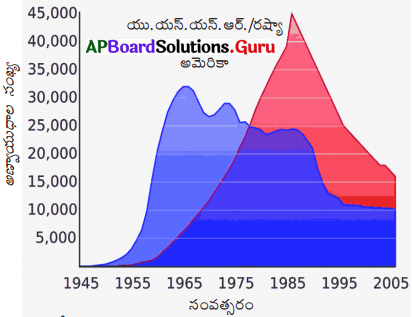
పై గ్రాను పరిశీలించి, ఇచ్చిన ప్రశ్నలకు సరియైన సమాధానము ఎంచుకోండి.
127. 1945 తర్వాత USA మరియు USSR మధ్య ఆయుధ పోటీకి కారణం ఏది?
A) తర్వాత జరిగే ప్రపంచ యుద్ధానికి సన్నద్ధమవ్వడం.
B) దురాక్రమణ పూరక జాతీయతావాదం.
C) ప్రచ్ఛన్న యుద్ధంలో భాగం
D) పైవన్నీ
జవాబు:
C) ప్రచ్ఛన్న యుద్ధంలో భాగం
128. 2005 నాటికి ఏ దేశం వద్ద ఆయుధాలు తక్కువగా ఉన్నాయి?
జవాబు:
అమెరికా.
10th Class Social 20th Lesson 1 Mark Important Questions and Answers in Telugu Medium
ప్రశ్న 1.
NATO ను విస్తరించండి.
(లేదా)
నాటో (NATO) ఎప్పుడు ఏర్పడింది. ఎవరు ఏర్పాటు చేశారు?
జవాబు:
1949లో నాటో ఏర్పడింది (ఉత్తర అట్లాంటిక్ సంధి వ్యవస్థ). దీనిని అమెరికా ఏర్పాటు చేసింది.
ప్రశ్న 2.
భారతదేశం, బంగ్లాదేశ్ ఉన్న పటం చూసి రెండు దేశాల మధ్య సహకారం ఆ రెండింటికి ఎందుకు ముఖ్యమైనదో వివరించండి.
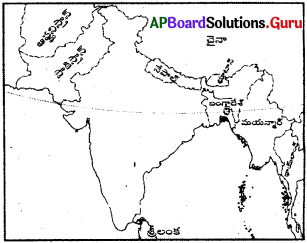
జవాబు:
- రెండు దేశాలు అనేక రంగాలలో ప్రత్యేకించి ఆర్థిక రంగంలోనూ, నదీ జలాల విషయంలోనూ సహకరించుకుంటున్నాయి. మరియు ప్రకృతి వైపరీత్యాల నిర్వహణలోనూ రెండు దేశాల మధ్య సహకార ఒప్పందం ఉంది.
- దక్షిణ ఆసియాని మయన్మార్ ద్వారా తూర్పు ఆసియాతో అనుసంధానం చెయ్యాలన్న భారతదేశ విధానంలో బంగ్లాదేశ్ ఒక భాగమైంది.
ప్రశ్న 3.
భారత, చైనాల మధ్య గల సరిహద్దు రేఖ ఏది?
జవాబు:
మెక్మ హన్ రేఖ
ప్రశ్న 4.
‘పంచశీల’ అనగానేమి?
జవాబు:
శాంతి, అహింస, సహజీవనం అనేవి మన విదేశాంగ నీతి సూత్రాలు. 1954లో టిబెట్టు విషయంపై భారతదేశం, చైనాలు చేసుకున్న ఒడంబడికలో శాంతియుత సహజీవన సూత్రం వివరించబడింది. దీనిలో 5 సూత్రాలు ఉంటాయి. అందుకే దీనిని ‘పంచశీల’ అంటారు.
ప్రశ్న 5.
రెందు ధృవాల, ఏక ధృవ ప్రపంచం అన్న పదాలను వివరింపుము.
జవాబు:
రెండవ ప్రపంచ యుద్ధం తర్వాత అమెరికా, రష్యా దేశాల నాయకత్వంలో ప్రపంచం విభిన్న సిద్దాంతాలు గల రెండు బృందాలుగా విడిపోయింది. ఈ పరిస్తితిని రెండు ధృవాల ప్రపంచం అంటారు….
USSR పతనంతో అమెరికా ఒక్కటే ప్రపంచంలో బలమైన శక్తిగా మిగిలింది. ఈ పరిస్థితిని ఏకధృవ ప్రపంచం అంటారు.

ప్రశ్న 6.
అలీనోద్యమం అనగానేమి?
జవాబు:
రెండవ ప్రపంచ యుద్ధం తర్వాత స్వాతంత్ర్యం పొందిన దేశాలు ఏ సైనిక కూటమిలోనూ చేరకుండా అంతర్జాతీయ రాజకీయాలలో తటస్థ విధానాన్ని అనుసరించడాన్ని అలీన ఉద్యమం అంటారు.
ప్రశ్న 7.
క్రింది ఫోను పరిశీలించి ఇచ్చిన ప్రశ్నలకు జవాబులు వ్రాయుము.

గ్రాఫ్ : అమెరికా, రష్యాల వద్ద అణ్వాయుధ నిల్వలు
1) 1955-2005 మధ్య కాలంలో ఏ దేశం యొక్క అణ్వాయుధాల సంఖ్య ఎక్కువగా ఉన్నది?
జవాబు:
1955-2005 మధ్యకాలంలో రష్యా యొక్క అణ్వాయుధాల సంఖ్య ఎక్కువగా ఉన్నది.
2) 1985 సం|| తరువాత నుండి అణ్వాయుధాల నిల్వలలో తగ్గుదల ఎందుకు వచ్చింది?
జవాబు:
ప్రజల ఒత్తిడి మేరకు మరియు యుద్ధాలను నిరోధించే పనిలో భాగంగా శాంతిని పెంపొందించే దిశగా చర్చలు ప్రారంభించి ప్రపంచ శాంతిని నెలకొల్పాలనే ఉద్దేశ్యంతో అణ్వాయుధాల తయారీ తగ్గి నిల్వలు తగ్గాయి.
ప్రశ్న 8.
ఈ క్రింది పటాన్ని పరిశీలించి క్రింది ప్రశ్నలకు జవాబులు రాయంది.
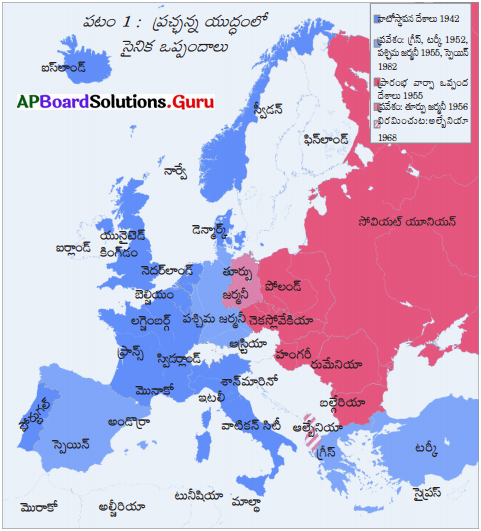
A) “నాటో” స్థాపన నాటి రెండు దేశాలు ఏవి?
జవాబు:
నార్వే, యునైటెడ్ కింగ్డమ్, ఫ్రాన్స్, ఇటలీ, పోర్చుగల్, బెల్జియం, డెన్మార్క్ ఐల్యాండ్, లక్సెంబర్గ్, నెదర్లాండ్.
B) “వార్సా” క్రింద ఉన్న రెండు దేశాలు ఏవి?
జవాబు:
సోవియట్ యూనియన్, అల్బేనియా, పోలాండ్, రుమేనియా, హంగరీ, చెకొస్లోవేకియా, బల్గేరియా.
C) పై పటం దేనిని గురించి తెలియజేస్తుంది?
జవాబు:
పై పటం ప్రచ్ఛన్న యుద్ధంలో సైనిక ఒప్పందాల గురించి తెలియజేస్తుంది.
D) యునైటెడ్ కింగ్డమ్ ను ‘ద్వీపం’ అని ఎందుకు అంటారు?
జవాబు:
యునైటెడ్ కింగ్డమ్ చుట్టూ నీటిచే ఆవరించబడి ఉండడం వలన ‘ద్వీపం’ అని అంటారు.
ప్రశ్న 9.
పంచశీల సూత్రాల ప్రధాన ఉద్దేశ్యం ఏమిటి?
జవాబు:
గాంధేయవాద సిద్ధాంతాలైన శాంతి, అహింస ఆధారంగా విదేశాంగ నీతిని మలచుకోవడం.
ప్రశ్న 10.
ప్రచ్ఛన్న యుద్ధం అనగా నేమి?
జవాబు:
ప్రపంచంలో ఏ రెండు చిన్న దేశాల మధ్య ఘర్షణ తలెత్తినా అగ్రరాజ్యాలు రెండూ చెరొక పక్షం వహించి మాటలు, ప్రచారం ద్వారా యుద్ధం చేశాయి. సంప్రదాయ యుద్ధాలలో మాదిరి పోరు లేదు కనుక దీనిని ప్రచ్ఛన్న యుద్ధం అంటారు.

ప్రశ్న 11.
‘జియానిస్ట్ ఉద్యమం’ ఎందుకు మొదలయ్యింది?
జవాబు:
ప్రపంచ వ్యాప్తంగా ఉన్న యూదులను ఏకం చేసి, తమ మాతృభూమి అయిన పాలస్తీనాను తిరిగి పొంది, యూదులకు ప్రత్యేక దేశాన్ని నిర్మించటానికిగాను యూదులలో ‘జియానిస్ట్ ఉద్యమం’ మొదలయ్యింది.
ప్రశ్న 12.
పంచశీల సూత్రాలలో రెండింటిని పేర్కొనండి..
జవాబు:
పంచశీల సూత్రాలు:
- ఒకరి సర్వసత్తాకతను, భౌగోళిక సమగ్రతను మరొకరు గౌరవించటం.
- ఇతర దేశాల అంతర్గత వ్యవహారాలలో జోక్యం చేసుకోకపోవటం.
- దాడులకు దిగకపోవటం, వివాదాలను పరస్పర అవగాహనతో పరిష్కరించుకోవటం.
- అంతర్జాతీయ సంబంధాలతో పరస్పర గౌరవం, సహకారాల కోసం కృషి చేయటం.
- శాంతియుత సహజీవనాన్ని ప్రోత్సహించటం.
ప్రశ్న 13.
ఐక్యరాజ్యసమితి యొక్క ఏవైనా రెండు ఉద్దేశ్యములను తెలపండి.
జవాబు:
- ప్రపంచ శాంతి
- అభివృద్ధి
- మానవ హక్కులను కాపాడటం
- అంతర్జాతీయ చట్టాలను గౌరవించడం
ప్రశ్న 14.
ప్రస్తుత ఐక్య రాజ్య సమితి సెక్రటరీ జనరల్ ఎవరు?
జవాబు:
ఆంటోనియో గెటరస్
ప్రశ్న 15.
“యుద్ధం వల్ల గెలిచిన దేశాలకు కూడా నష్టం వాటిల్లుతుంది.” – వ్యాఖ్యానించంది.
జవాబు:
యుద్ధాల్లో గెలిచిన దేశాలకు కూడా ధన, ప్రాణ, ఆస్తి నష్టం జరుగుతుంది. యుద్ధంలో పాల్గొన్న ఏ దేశానికైనా ఈ నష్టం తప్పదు.
ప్రశ్న 16.
బాక్స్ ‘ఏ’ లో ఉన్న లోగో బాక్స్ ‘బి’ లో ఉన్న ఏ అంతర్జాతీయ సంస్థకు చెందినది?
జవాబు:

UNO.
ప్రశ్న 17.
చంద్రునిపై కాలు మోపిన మొదటి వ్యక్తి ఎవరు?
జవాబు:
నీల్ ఆర్మ్ స్ట్రాంగ్.
ప్రశ్న 18.
అమెరికా అభివృద్ధి చెందడానికి కారణమేమి?
జవాబు:
యుధ రంగాలకు దూరంగా ఉన్నందున అమెరికా పరిశ్రమలు, వ్యవసాయం వృద్ధి చెందాయి.
ప్రశ్న 19.
రెండవ ప్రపంచ యుద్ధం తరువాత ప్రపంచం ఏ విధంగా విభజింపబడింది?
జవాబు:
రెండవ ప్రపంచ యుద్ధం తరువాత ప్రపంచ పెట్టుబడిదారీ విధానం – కమ్యూనిజం మధ్య (అమెరికా – రష్యాల మధ్య) విభజింపబడింది.
ప్రశ్న 20.
ఐక్యరాజ్య సమితి ఎప్పుడు ఏర్పడింది?
జవాబు:
1945 అక్టోబరు 24న ఐక్యరాజ్య సమితి ఏర్పడింది.
ప్రశ్న 21.
ఐక్యరాజ్య సమితి ఏ విధంగా పనిచేస్తుంది?
జవాబు:
ఇది ఆరు వేరువేరు సంస్థల ద్వారా పనిచేస్తుంది.
ప్రశ్న 22.
భద్రతా సమితిలోని శాశ్వత సభ్యదేశాలేవి?
జవాబు:
భద్రతా సమితిలో చైనా, ఫ్రాన్స్, బ్రిటన్, యుఎస్ఎస్ఆర్ (ఇప్పుడు రష్యా), అమెరికాలు శాశ్వత సభ్య దేశాలు.

ప్రశ్న 23.
అమెరికా, రష్యాలు పెద్ద ఎత్తున నిధులు దేని మీద ఖర్చు చేశాయి?
జవాబు:
అమెరికా, రష్యాలు పెద్ద ఎత్తున నిధులు ఆయుధ సేకరణ మీద ఖర్చుచేశాయి.
ప్రశ్న 24.
మొదటి ఉపగ్రహం ఏది? ఎవరు ప్రయోగించారు?
జవాబు:
మొదటి ఉపగ్రహం స్పుత్నిక్, దీనిని రష్యా ప్రయోగించింది.
ప్రశ్న 25.
అంతరిక్షంలోకి వెళ్ళిన మొదటి వ్యక్తి ఎవరు?
జవాబు:
అంతరిక్షంలోకి వెళ్ళిన మొదటి వ్యక్తి “యూరిగగారిన్”. ఇతనిని రష్యా పంపింది.
ప్రశ్న 26.
అమెరికా చంద్రమండలం మీదకి ఎవరిని, ఎప్పుడు పంపించింది?
జవాబు:
అమెరికా “నీల్ ఆస్ట్రాంగ్”ని 1969లో చంద్రమండలం మీదకి పంపించింది.
ప్రశ్న 27.
అలీనోద్యమ మొదటి సమావేశం ఎప్పుడు, ఎక్కడ జరిగింది?
జవాబు:
అలీనోద్యమ మొదటి సమావేశం 1961 సెప్టెంబరులో యుగోస్లావియాలోని బెల్ గ్రేడ్ లో జరిగింది.
ప్రశ్న 28.
పశ్చిమ ఆసియా అని దేనినంటారు?
జవాబు:
యూరప్, ఆసియా మధ్య ప్రాంతాన్ని పశ్చిమ ఆసియా అంటారు.
ప్రశ్న 29.
పశ్చిమ ఆసియా సంక్షోభమని దేనిని అంటాము?
జవాబు:
‘అరబ్బులు, యూదుల మధ్య ఏర్పడిన ఘర్షణలను’ పశ్చిమ ఆసియా సంక్షోభమని అంటారు.
ప్రశ్న 30.
పశ్చిమ ఆసియా సంక్షోభం మరింత క్లిష్టరూపం దాల్చడానికి కారణమేమి?
జవాబు:
మధ్యప్రాచ్యంలో ప్రత్యేకించి అరబ్బు ద్వీప ఖండంలో పెద్ద ఎత్తున చమురు నిల్వలను కనుగొనటంతో సమస్య మరింత సంక్లిష్టరూపం దాల్చింది.
ప్రశ్న 31.
మిహాయిల్ గోర్బచెవ్ ప్రవేశపెట్టిన సంస్కరణలను ఏమంటారు?
జవాబు:
గోర్బచెవ్ ప్రవేశ పెట్టిన సంస్కరణలను “గ్లాసెస్”, ‘పెరిస్తోయికా’గా పిలుస్తారు.
ప్రశ్న 32.
చైనా గణతంత్ర రాజ్యం ఎప్పుడు అయింది?
జవాబు:
సుదీర్ఘపోరాటం, హింసాత్మక విప్లవం తరువాత 1949లో చైనా కమ్యూనిస్టు గణతంత్ర రాజ్యం అయింది.
ప్రశ్న 33.
తాష్కెంట్ ఒప్పందం ఎవరెవరి మధ్య జరిగింది?
జవాబు:
భారత ప్రధానమంత్రి లాల్ బహాదుర్ శాస్త్రి, పాకిస్తాన్ సైనిక నియంత ‘జనరల్ ఆయుబ్ ఖాన్’ల మధ్య 1966లో తాష్కెంట్ ఒప్పందం జరిగింది.
ప్రశ్న 34.
బంగ్లాదేశ్ కు, భారతదేశానికి మధ్య విభేదాంశాలు ఏమిటి?
జవాబు:
బ్రహ్మపుత్ర, గంగానదీ జలాల పంపిణీ, బంగ్లాదేశ్ ప్రజలు చట్టవిరుద్ధంగా భారతదేశంలోకి రావడమనే అంశాలమీద విభేదాలున్నాయి.
ప్రశ్న 35.
సిమ్లా ఒప్పందం ఎవరెవరి మధ్యన జరిగింది?
జవాబు:
1971లో పాకిస్తాన్తో యుద్ధం ముగిసిన తరువాత జుల్ఫికర్ అలీ భుట్టో, మన ప్రధాన మంత్రి ఇందిరాగాంధీ మధ్యన ఈ సిమ్లా ఒప్పందం జరిగింది.

ప్రశ్న 36.
ఐక్యరాజ్య సమితి స్థాపనకు కారణమేమిటి?
జవాబు:
అన్ని దేశాలలో శాంతి, అభివృద్ధి జగడానికి ఒక ప్రపంచ సంస్థను ఏర్పాటు చేయటమనేది ఐక్యరాజ్య సమితి ఏర్పాటుకు దారితీసింది.
ప్రశ్న 37.
యుఎస్ఎస్ఆర్ ఎప్పుడు రద్దు అయ్యింది?
జవాబు:
1991లో గోర్బచెవ్ యుఎస్ఎస్ఆర్ ని రద్దుపరిచారు. అలా రద్దయిన యుఎస్ఎస్ఆర్ లోని రాజ్యాలు స్వతంత్ర దేశాలు అయ్యా యి.
10th Class Social 20th Lesson 2 Marks Important Questions and Answers in Telugu Medium
ప్రశ్న 1.
క్రింది విషయాన్ని చదివి, అర్థం చేసుకొని ప్రశ్నకు సమాధానం రాయండి.
ఐక్యరాజ్యసమితి శాశ్వత శాంతి, మానవ అభివృద్ధి అన్న రెండు ఉద్దేశాలతో ఏర్పడింది. అదే సమయంలో అది దేశాల స్వయంప్రతిపత్తిని గుర్తించి ప్రపంచశాంతికి ముప్పు లేదా తీవ్ర మానవహక్కుల ఉల్లంఘన వంటి సందర్భాల్లో తప్పించి దేశాల అంతర్గత వ్యవహారాల్లో జోక్యం చేసుకోనని మాట ఇచ్చింది.
ప్రశ్న. ఐక్యరాజ్యసమితి ఉద్దేశాలపై వ్యాఖ్యానించండి.
జవాబు:
ఐక్యరాజ్యసమితి అక్టోబరు 24, 1945 వ సంవత్సరం ఏర్పడింది.
- ఐక్యరాజ్యసమితి ప్రపంచ శాంతిని నెలకొల్పడం కోసం ఏర్పాటు చేయబడింది.
- ప్రపంచ శాంతిని నెలకొల్పడం కోసం 6 ప్రధాన అంగాలతో పాటు, 8 ప్రత్యేక ఏజన్సీలతో పనిచేస్తుంది.
- ఐక్యరాజ్యసమితి 2 ప్రధానమైన ఉద్దేశాలతో ఏర్పడింది. అవి
1) శాశ్వతశాంతి,
2) మానవ అభివృద్ధి. - ఇవే కాకుండా మానవ హక్కులను కాపాడటం, అంతర్జాతీయ చట్టాలను గౌరవించడం, సామాజిక ప్రగతిని ప్రోత్సహించడం అనే అంశాలతో ఇది పనిచేస్తుంది. అంతేకాక ఐక్యరాజ్యసమితి ఏ దేశం యొక్క అంతరంగిక వ్యవహారాలలో తలదూర్చనని, కాని ఏ దేశం అయిన మానవ హక్కులను ఉల్లంఘించిన లేదా ప్రపంచ శాంతికి ముప్పు కలిగించినట్లయితే వారి మీద చర్యలు తీసుకోవడం జరుగుతుందని ఐక్యరాజ్య సమితి పేర్కొన్నది.
ప్రశ్న 2.
ప్రచ్ఛన్న యుద్ధాన్ని ఎలా అర్థం చేసుకుంటావు?
జవాబు:
- ప్రపంచంలో ఏ రెండు చిన్న దేశాల మధ్య ఘర్షణ తలెత్తినా అగ్రరాజ్యాలు రెండూ చెరొక పక్షం వహించి మాటలు, ప్రచారం ద్వారా యుద్ధం చేశాయి. వాస్తవానికి యుద్ధం జరుగదు. కనుక దీనిని ‘ప్రచ్ఛన్న యుద్ధం’ అంటారు.
- రెండు కూటముల మధ్య పరస్పర ద్వేషం, అపనమ్మకం, శత్రుత్వ భావనలు ఏర్పడినాయి.
- ఆయుధ పరిశోధనల పైనా, ఖండాంతర క్షిపణులు, విధ్వంసకర అణ్వాయుధాల నిల్వలపైనా అమెరికా, రష్యాలు పెద్ద ఎత్తున నిధులు ఖర్చు చేసినాయి.
- వివిధ దేశాలు అభద్రతా భావంతో రహస్య కూటములుగా ఏర్పడటం, ఒప్పందాలు కుదుర్చుకోవటం జరిగింది.
- యుద్ధం జరగకపోయినప్పటికి యుద్ధ నీడలో బితుకు బితుకుమంటూ రెండు దేశాల శిబిరాలు గడిపాయి.
- పలుమార్లు ప్రపంచం యుద్ధం అంచున నిలిచింది. ఉద్రిక్త వాతావరణం నెలకొంది.
- సామ్యవాదం, పెట్టుబడిదారీవిధానం మొదలైన సైద్ధాంతికపరమైన విభేదాలు కూడా పొడ చూపినాయి.

ప్రశ్న 3.
శాంతి పట్ల తన నిబద్ధతను చాటటానికి జవహర్లాల్ నెహ్రూ ప్రఖ్యాతిగాంచిన పంచశీల సూత్రాలను ప్రతిపాదించాడు.
1) ఒకరి సర్వసత్తాకతను, భౌగోళిక సమగ్రతను మరొకరు గౌరవించుట.
2) ఇతర దేశాల అంతర్గత వ్యవహారాలలో జోక్యం చేసుకోకపోవటం.
3) దాడులకు దిగకపోవటం, వివాదాలను పరస్పర అవగాహనతో పరిష్కరించుకోవటం.
4) అంతర్జాతీయ సంబంధాలలో పరస్పర గౌరవం, సహకారం కోసం కృషి చేయటం.
5) శాంతియుత సహజీవనాన్ని ప్రోత్సహించటం.
ప్రశ్నలు:
1) పంచశీల ఒప్పందం ఏ ఏ దేశాల మధ్య జరిగింది?
2) ఏవైనా రెండు పంచశీల ఒప్పందాలను వ్రాయండి.
జవాబు:
1) పంచశీల ఒప్పందం భారత్-చైనా దేశాల మధ్య జరిగింది.
2) a) ఒకరి సర్వసత్తాకతను, భౌగోళిక సమగ్రతను మరొకరు గౌరవించుట
b) ఇతర దేశాల అంతర్గత వ్యవహారాలలో జోక్యం చేసుకోకపోవడం
c) దాడులకు దిగకపోవటం, వివాదాలను పరస్పర అవగాహనతో పరిష్కరించుకోవటం
d) అంతర్జాతీయ సంబంధాలలో పరస్పర గౌరవం, సహకారం కోసం కృషి చేయడం
e) శాంతియుత సహజీవనాన్ని ప్రోత్సహించడం.
ప్రశ్న 4.
ఒక దేశం తన పొరుగు దేశాలతో స్నేహపూరిత సంబంధాలను కలిగి ఉండటానికి నీవు యిచ్చే సూచనలు ఏవి?
జవాబు:
ఏ దేశము ప్రస్తుత కాలంలో ఒంటరిగా మనుగడ సాగించలేదు, అలాగే తమ ప్రజల అవసరాలకు కావలసిన వనరులు తమ దేశంలో లభ్యం కావు, కావున ప్రతి దేశానికి పొరుగు దేశం యొక్క సహాయ సహకారాలు తప్పనిసరిగా అవసరం అవుతాయి. అందువలన ప్రతిదేశం పొరుగుదేశంతో సత్సంబంధాలను కొనసాగించాలి.
a) పొరుగు దేశాలతో ఉన్న వివాదాలను శాంతియుతంగా పరిష్కరించుకోవాలి.
b) మనదేశం యొక్క శాంతి, సౌభాగ్యాలను పొరుగు దేశాలతో పంచుకోవాలి.
c) ఒకరికి ఒకరు పోటీతత్త్వం మానివేసి పరస్పరం ఆర్థిక సహాయ సహకారాలు అందించుకుంటూ ఎదగాలి.
d) సైనికవాదాన్ని వీడి సోదరభావాన్ని నెలకొల్పుకోవాలి.
e) ఇతరదేశాల అంతర్గత విషయాలలో జోక్యం చేసుకోకుండా శాంతియుత సహజీవనాన్ని ప్రోత్సహించుకోవాలి.
ప్రశ్న 5.
క్రింది పటాన్ని పరిశీలించి, ప్రశ్నలకు సమాధానాలు రాయండి.
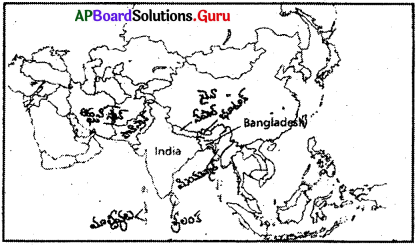
ప్రశ్నలు:
A) భారతదేశ ఈశాన్య సరిహద్దు దేశాలు రెండింటిని పేర్కొనండి..
B) భారతదేశంతో సముద్రతీర సరిహద్దు గల దేశాలు రెండింటిని పేర్కొనండి.
జవాబు:
A) భూటాన్, చైనా, నేపాలు భారతదేశానికి ఈశాన్య సరిహద్దులో ఉన్న దేశాలు.
B) శ్రీలంక మరియు మాల్దీవులు భారతదేశంతో సముద్రతీర సరిహద్దులో గల దేశాలు.
ప్రశ్న 6.
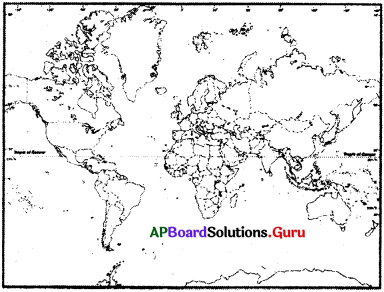
ప్రశ్నలు:
1) నాటో సైనిక ఒప్పందాన్ని ప్రతిపాదించిన దేశమేది?
జవాబు:
అమెరికా సంయుక్త రాష్ట్రాలు / అమెరికా
2) ఆఫ్రికా, ఐరోపా ఖండాల మధ్య ఉన్న సముద్రమేది?
జవాబు:
మధ్యధరా సముద్రము
ప్రశ్న 7.
క్రింది విషయాన్ని చదివి, అర్థం చేసుకొని సమాధానం రాయంది.
“వాస్తవానికి ఆర్థిక మాంద్యం కారణంగా ఏర్పడిన ఆర్థిక సంక్షోభం నుంచి అమెరికా బయటపడటానికి రెండవ ప్రపంచ యుద్ధం దోహదపడింది. యుద్ధ రంగాలకు దూరంగా ఉన్నందున అమెరికా పరిశ్రమలు, వ్యవసాయం వృద్ధి చెందాయి. ఎక్కువ ఉత్పత్తి, ఉపాధి సాధించారు. హారీ ట్రూమన్ “యుద్ధం వలన మనం ప్రపంచంలో కెల్లా శక్తిమంత మైన దేశంగా ఆవిర్భవించాం” అన్నాడు.
రెండవ ప్రపంచ యుద్ధం అమెరికాను ఆర్థిక సంక్షోభం నుంచి ఎలా బయటపడేటట్లు చేసిందని భావించవచ్చు?
జవాబు:
- రెండో ప్రపంచ యుద్ధ ప్రారంభంలో అమెరికా యుద్ధరంగాలకు దూరంగా ఉంది.
- యుద్ధ రంగాలకు దూరంగా ఉన్నందున అమెరికా పరిశ్రమలు, వ్యవసాయం వృద్ధి చెందాయి.
- యుద్ధరంగానికి కావలసిన ఆయుధాలను అమెరికా యూరోపియన్ దేశాలకు సరఫరా చేసి లాభాలను గడించింది.
- అమెరికా భూభాగం మీద యుద్ధం జరగలేదు. కాబట్టి దానికి జరిగిన నష్టం తక్కువ.
- రెండవ ప్రపంచ యుద్ధకాలంలో అమెరికా ఎక్కువ ఉపాధి, అధిక ఉత్పాదకత సాధించింది. అందువల్ల అమెరికా రెండవ ప్రపంచ యుద్ధ కాలంలో ఆర్థిక సంక్షోభం నుండి బయటపడింది.

ప్రశ్న 8.
ఈ క్రింది పాఠ్యాంశాన్ని చదివి, ప్రశ్నలకు సమాధానాలు వ్రాయండి.
అమెరికా, రష్యా రెండింటి దగ్గర అణ్వాయుధాలు ఉన్నాయి. అయితే అణు యుద్ధమే జరిగితే ఏ దేశము గెలవదని ఆ రెండింటికీ తెలుసు అయినప్పటికీ అవి సైనిక, కీలక ఒప్పందాలు కుదుర్చుకోసాగాయి. 1949లో అమెరికా తన మైత్రిని ఉత్తర అట్లాంటికా సంధి వ్యవస్థ (నాటో) అన్న దాని ద్వారా బలపరుచుకుంది. దీనికి ప్రతి చర్యగా కమ్యూనిస్టు దేశాలు వార్సా ఒప్పందం కుదుర్చుకున్నాయి. అమెరికా వివిధ ప్రాంతాలలో మిలటరీ మిత్రత్వ ఒప్పందాలైన – సౌత్ ఈస్ట్ ఏసియన్ ట్రీటీ ఆర్గనైజేషన్ (సీటో), సెంట్రల్ ట్రీటీ ఆర్గనైజేషన్ (సెటో)లను కుదుర్చుకుంది.
a) నాటోకి ప్రతిచర్యగా కమ్యూనిస్టు దేశాలు ఏర్పాటు చేసుకున్న ఒప్పందం ఏది?
జవాబు:
వార్సా ఒప్పందం
b) అమెరికా ఏర్పాటు చేసుకున్న మిలటరీ, మిత్రత్వ ఒప్పందాలు ఏవి?
జవాబు:
సౌత్ ఈస్ట్ ఏసియన్ ట్రీటీ ఆర్గనైజేషన్ (సీటో), సెంట్రల్ ట్రీటీ ఆర్గనైజేషన్ (సెట్స్)
ప్రశ్న 9.
ప్రస్తుత భారత్-పాకిస్తాన్ మధ్య సంబంధాలను సమీక్షించండి.
జవాబు:
1) కాశ్మీర్ విషయంలో భారత్, పాకిస్థాన్ దేశాల మధ్య ఏర్పడిన వైరుధ్యాలు కొనసాగుతున్నాయి.
2) శాంతి స్థాపనకై ప్రయత్నాలు కొనసాగించడంతో పాటు వర్తక వాణిజ్యం, క్రీడలు, పర్యాటకం మొదలైన అంశాలలో మంచి సంబంధాలు నెలకొల్పే ప్రయత్నం భారతదేశం వైపు నుండి జరుగుతున్నది.
ప్రశ్న 10.
భారత్-పాకిస్తాన్ యొక్క ప్రస్తుత సంబంధాలను గురించి సంక్షిప్తంగా వ్రాయండి.
జవాబు:
భారత్-పాకిస్తాన్ల మధ్య సంబంధాలు :
- కాశ్మీర్ సమస్య
- నియంత్రణ రేఖ వద్ద కాల్పుల విరమణ ఉల్లంఘన
- సరిహద్దు గ్రామాలపై దాడులు
- అక్రమ చొరబాట్లు
- తీవ్రవాదాన్ని ప్రోత్సహించడం.
ప్రశ్న 11.
క్రింద యివ్వబడిన గ్రాఫ్ ను విశ్లేషించి మీ పరిశీలనను వ్రాయుము.

జవాబు:
- రెండవ ప్రపంచయుద్ధం తర్వాత ప్రపంచం రెండు ప్రధాన రాజకీయ శిబిరాలుగా విడిపోయింది.
- ఒక శిబిరానికి రష్యా (USSR) నాయకత్వం వహించింది.
- రెండవ శిబిరానికి అమెరికా (USA) నాయకత్వం వహించింది.
- అమెరికా, రష్యాలు అణ్వాయుధ నిల్వలకై పోటీపడ్డాయి.
- 1965 నాటికి అమెరికా వద్ద అత్యధిక అణ్వాయుధ నిల్వలు ఉన్నాయి.
- 1985 నాటికి రష్యా వద్ద అత్యధిక అణ్వాయుధ నిల్వలు ఉన్నాయి.
- 2005 నాటికి రెండు దేశాలు అణ్వాయుధ నిల్వలు తగ్గించుకున్నాయి.
ప్రశ్న 12.
భారత దేశం అలీన విధానాన్ని ఎందుకు స్వీకరించింది?
జవాబు:
- అమెరికా, రష్యా మధ్య సైనిక ఆధిపత్యం, సైద్ధాంతిక విరోధాలు, ఆర్థిక ఆధిపత్యం కోసం జరిగిన పోటీ కారణంగా ప్రపంచం రెండు ధృవాలుగా విడిపోయింది.
- ఈ రెండు పక్షాలలో దేనివైపునా లేకుండా ఉండటాన్ని అలీనోద్యమం అంటారు.
- (వలస పాలన నుంచి విముక్తి పొంది) కొత్తగా స్వాతంత్ర్యం పొందిన దేశం కనుక ఏ సైనిక శిబిరంలోనూ చేరకుండా ఉండాలని.
- మిగతా దేశాలతో సాంస్కృతిక, ఆర్థిక సహకారాన్ని పెంపొందించుకునేందుకుగాను భారతదేశం అలీనోద్యమంను స్వీకరించింది.
ప్రశ్న 13.
ఐక్యరాజ్య సమితి అంగాలేవి?
జవాబు:
ఐక్యరాజ్య సమితి ఆరు అంగాలతో విధులు నిర్వహిస్తుంది.
- సాధారణ సభ
- భద్రతాసమితి
- ఆర్థిక, సామాజిక మండలి.
- ధర్మకర్తృత్వ మండలి
- అంతర్జాతీయ న్యాయస్థానం
- కార్యదర్శి వర్గం
ప్రశ్న 14.
ఐక్యరాజ్య సమితిలోని శాశ్వత సభ్యదేశాలేవి? వాటికున్న ప్రత్యేక హోదా ఏమిటి?
జవాబు:
ఐక్యరాజ్య సమితిలో శాశ్వత సభ్య దేశాలైన చైనా, ఫ్రాన్స్, బ్రిటన్, యుఎస్ఎస్ఆర్ (ఇప్పుడు రష్యా), అమెరికాలకు ప్రత్యేక హెూదా ఉంది. భద్రతాసమితి తీసుకున్న నిర్ణయాలను ఈ అయిదు దేశాలలో ఏ ఒక్కటైనా జోక్యం చేసుకుని వీటో చెయ్యవచ్చు అంటే తిరస్కరించవచ్చు.
ప్రశ్న 15.
ప్రచ్ఛన్న యుద్ధ కాలంలో ఆయుధ పోటీ ఏవిధంగా జరిగింది?
జవాబు:
ఆయుధ పరిశోధనల పైనా, ఖండాంతర క్షిపణులు, విధ్వంసకర అణ్వాయుధాల నిల్వల పైనా అమెరికా, రష్యాలు పెద్ద ఎత్తున నిధులు ఖర్చు చేశాయి. ఈ రెండు దేశాలలో ఒక్కొక్క దాని దగ్గర ప్రపంచాన్ని పలుమార్లు మట్టుపెట్టగల అణ్వాయుధాలు ఉన్నాయి.
ప్రశ్న 16.
ప్రచ్ఛన్న యుద్ధ కాలంలో అంతరిక్ష పోటీ ఏ విధంగా జరిగింది?
జవాబు:
మొదటి ఉపగ్రహం అయిన స్పుత్నికిని రష్యా ప్రయోగించింది. అలాగే అంతరిక్షంలోకి మొదటి వ్యక్తి యూరి గగారిన్ని రష్యా పంపించింది. దీంతో రెండు అగ్ర రాజ్యాల మధ్య ఉపగ్రహాలను ప్రయోగించటంలో పోటీ మొదలయ్యింది. నీల్ ఆ స్ట్రాంగ్ ని, ఇతరులను చంద్రమండలం మీదకి పంపటంలో 1969లో అమెరికా సఫలమయ్యింది.

ప్రశ్న 5.
అలీనోద్యమం యొక్క ఆశయాలేమిటి?
జవాబు:
ఆసియా, ఆఫ్రికా, ఆ తరువాత లాటిన్ అమెరికాలో కొత్తగా స్వాతంత్రం పొందిన దేశాల మధ్య సాంస్కృతిక, ఆర్థిక సహకారాన్ని ప్రోత్సహించటానికి అంతర్జాతీయ సంస్థగా అలీనోద్యమం రూపొందింది.
ప్రశ్న 17.
అలీనోద్యమం మొదటి సమావేశ ఉద్దేశాలేమిటి?
జవాబు:
- అలీనోద్యమ సభ్యదేశాల మధ్య సహకారం’, వీటిల్లో ‘అనేకం కొత్తగా స్వతంత్ర దేశాలు అయ్యాయి.
- పెరుగుతున్న ప్రచ్ఛన్న యుద్ధ తీవ్రతలు, మిగిలిన ప్రపంచంపై దాని ప్రభావం.
- వలస పాలననుంచి విముక్తి అయిన దేశాలు ఏ సైనిక శిబిరంలోనూ చేరకుండా చూడటం.
ఇవి అలీనోద్యమ మొదటి సమావేశ ఉద్దేశాలు.
10th Class Social 20th Lesson 4 Marks Important Questions and Answers in Telugu Medium
ప్రశ్న 1.
అలీన ఉద్యమం (NAM) అనగానేమి? దాని ప్రధాన లక్ష్యాలు ఏవి?
జవాబు:
- అమెరికా, రష్యా మధ్య సైనిక ఆధిపత్యం, సైద్ధాంతిక విరోధాలు, ఆర్థిక ఆధిపత్యం కోసం జరిగిన పోటీ కారణంగా ప్రపంచం రెండు ధృవాలుగా విడిపోయింది.
- ఈ రెండు పక్షాలలో దేనివైపునా లేకుండా ఉండటాన్ని అలీనోద్యమం అంటారు.
- అలీనోద్యమ (NAM) ప్రధాన లక్ష్యాలు :
1) అలీనోద్యమ సభ్యదేశాల మధ్య సహకారం పెంపొందించుకోవడం.
2) పెరుగుతున్న ప్రచ్ఛన్న యుద్ద తీవ్రతలు, మిగిలిన ప్రపంచంపై దాని ప్రభావంను అంచనా వేయటం.
3) వలస పాలన నుంచి విముక్తి అయిన దేశాలు ఏ సైనిక శిబిరంలోనూ చేరకుండా చూడటం.
4) ఆసియా, ఆఫ్రికా, లాటిన్ అమెరికాలో కొత్తగా స్వాతంత్ర్యం పొందిన దేశాల మధ్య సాంస్కృతిక, ఆర్థిక సహకారాన్ని ప్రోత్సహించటం.
ప్రశ్న 2.
ప్రపంచ శాంతి స్థాపనలో ఐక్యరాజ్యసమితి (UNO) పాత్ర ఏమిటి?
జవాబు:
ప్రపంచ శాంతి స్థాపనలో ఐక్యరాజ్యసమితి (UNO) పాత్ర : ఐక్యరాజ్యసమితి 1945, అక్టోబరు 24న ఏర్పడింది.
ప్రపంచ శాంతి పరిరక్షణలో ముఖ్య పాత్ర పోషిస్తుంది. అది ఎలాగంటే,
- ప్రచ్ఛన్న యుద్ధాన్ని నివారించటంలో ఐక్యరాజ్యసమితి ప్రశంసనీయ కృషి చేసింది.
- అణ్వాయుధాల తగ్గింపుకై రష్యా, అమెరికాలపై ఒత్తిడి తెచ్చి ఆ ప్రయత్నంలో సఫలీకృతమైంది.
- మూడో ప్రపంచ యుద్ధం సంభవించకుండా శాంతి స్థాపనకు కృషి చేస్తూ ఉంది.
- కాంగో స్వాతంత్ర్య సాధనలో సహాయ సహకారాలు అందించింది.
- పోర్చుగల్ నుండి అంగోలా స్వాతంత్ర్యం పొందడంలో తోడ్పడింది.
- ఆఫ్ఘనిస్థాన్ నుండి రష్యా సైన్యం తొలగించేలా కృషి సల్పింది.
- పాలస్తీనా సమస్యకు కొంతమేర పరిష్కారం చూపడం జరిగింది.
- భారత్, పాక్ మధ్య కాశ్మీర్ సమస్య పరిష్కారానికి తన వంతు కృషి చేస్తుంది.
- ఇరాన్, ఇరాక మధ్య యుద్ధ నివారణా చర్యలు చేపట్టింది.
- ఈజిప్ట్ నుండి ఇజ్రాయేల్ సైన్యాల ఉపసంహరణకు ప్రయత్నం చేసింది. ఈ విధంగా ఎన్నో సమస్యలలో యుద్ధం సంభవిస్తుందనుకున్న సమయంలో ఐక్యరాజ్యసమితి జోక్యం చేసుకుని శాంతియుతంగా పరిష్కరించటం జరిగింది.
ప్రశ్న 3.
భారత, పాకిస్తాన్ అభివృద్ధికి శాంతియుత పరిస్థితులు ఎంత మేరకు దోహదపడతాయి? చర్చించండి.
(లేదా)
భారతదేశము, పాకిస్తాన్ మధ్య శాంతి ఇరుదేశాల అభివృద్ధికి అవసరం. ఎందువలన? ఇటీవలి పరిణామాలను దృష్టిలో ఉంచుకుని వివరించండి.
జవాబు:
భారతదేశం, పాకిస్తాన్ అభివృద్ధికి రెండు దేశాల మధ్య శాంతి అవసరమే. ఎందుకనగా …….
1) యుద్ధ ఖర్చు :
ఈ రెండు దేశాల మధ్య నిరంతరం ఘర్షణలు కొనసాగుతుండడంతో ఇరు దేశాలు ఆయుధాలను, సైనికసంపత్తిని సమీకరించుకొనుటకు అధిక ధనాన్ని వెచ్చిస్తున్నారు. ఈ రెండు దేశాల మధ్య శాంతి నెలకొంటే యుద్ధ ఖర్చు తగ్గుతుంది.
2) ప్రశాంత వాతావరణం ఏర్పడుతుంది :
ఇరు దేశాల మధ్య యుద్ధ భయం లేకపోతే ఇరు దేశాల ప్రజలు శాంతి, సుఖ సంతోషాలతో జీవిస్తారు.
3) సరిహద్దు రాష్ట్రాలలో యుద్ధభీతి తగ్గుతుంది :
సరిహద్దు రాష్ట్రాల వాళ్లు యుద్ధ భయం లేకుండా ప్రశాంత జీవనం సాగించవచ్చు.
4) సంస్కృతి, నాగరికతలను పంచుకున్న సుదీర్ఘ చరిత్ర ఇరుదేశాలకూ ఉండటంతో ఇరు దేశాల మధ్య స్నేహం, శాంతి నెలకొనవలసిన అవసరం ఎంతైనా ఉంది.
ప్రశ్న 4.
క్రింది పట్టికను పరిశీలించి, విశ్లేషిస్తూ ఒక పేరాను వ్రాయుము.

జవాబు:
- పై పట్టిక మనకు బ్రిటన్, జర్మనీ దేశాలు 1933వ సంవత్సరము నుండి 1939వ సంవత్సరము వరకు రక్షణకు ఎంతఖర్చు పెట్టినారో తెలియజేస్తుంది.
- మొదటి ప్రపంచ యుద్ధము తరువాత ప్రపంచ దేశాలు వాటి స్వీయరక్షణకు మరియు శత్రువుల నుంచి కాపాడటానికి ఆయుధాల తయారీకి మరియు సైన్యమును పెంచుకోవటానికి ఎక్కువ ఖర్చు చేశాయి.
- బ్రిటన్ ని తీసుకున్నట్లయితే 1933 నుండి 1939 వరకు తాను 455 మిలియన్ డాలర్ల నుండి 1817 మిలియన్ డాలర్ల వరకు ఖర్చు పెట్టినది.
- జర్మనీని పరిశీలించినట్లయితే జర్మనీ దేశ రక్షణకోసం 253 మిలియన్ డాలర్ల నుండి 4400 మిలియన్ డాలర్ల వరకు ఖర్చు పెట్టినది. బ్రిటన్ కన్న జర్మనీ దేశరక్షణకు ఎక్కువగా ఖర్చు పెట్టినది. అంతేగాక మొదటి ప్రపంచ యుద్ధంలో ఓడిపోయిన జర్మనీ రెండవ ప్రపంచ యుద్ధంలో బ్రిటన్ ని ఓడించాలని మిలటరీ మీద బాగా ఖర్చు చేసినది.
- రెండు ప్రపంచ యుద్దాల మధ్య కాలంలో దేశ రక్షణకు ఖర్చు పెడుతూ ప్రతిదేశం ఇంకొక దేశమును శత్రువుగా చూడటం వలన వైరుధ్యం పెరిగి రెండవ ప్రపంచ యుద్ధానికి దారితీసింది.
- ప్రతిదేశము రక్షణ కోసం చేసే ఖర్చుకన్న శాంతి కోసం చేసినట్లయితే ఈ యుద్ధాలు వచ్చే వికాదు. ప్రజలు సుఖశాంతులతో విలసిల్లేవారు.
ప్రశ్న 5.
క్రింది గ్రాఫ్ ను పరిశీలించి దిగువన యివ్వబడిన ప్రశ్నలకు జవాబులు వ్రాయుము.

i) 1955-1975 మధ్య కాలంలో ఏ దేశం ఎక్కువ ఆయుధ నిల్వలు కలిగి ఉంది?
జవాబు:
1955-1975 మధ్య కాలంలో అమెరికా దేశం ఎక్కువ ఆయుధ నిల్వలను కలిగి ఉంది.
ii) 1965లో అమెరికా కలిగి ఉన్న అణ్వాయుధాల సంఖ్య ఎంత?
జవాబు:
1965లో అమెరికా దగ్గర ఉన్న అణ్వాయుధాల సంఖ్య – 30,000
iii) రెండవ ప్రపంచ యుద్ధం తరువాత ప్రపంచ దేశాలు రెండు శిబిరాలుగా విడిపోవడానికి దారితీసిన పరిస్థితులేమిటి?
జవాబు:
రెండవ ప్రపంచ యుద్ధం తరువాత సమానత్వం అన్న భావన ప్రభుత్వ నియంత్రణతో అభివృద్ధి అనే భావాలతోను మరియు బహుపార్టీ ప్రజాస్వామ్యం, ప్రైవేటు పెట్టుబడిదారులతో నియంత్రణ ద్వారా అభివృద్ధి సాధించాలనే భావాలతో రెండు సైద్ధాంతిక పరమైన రాజకీయ శిభిరాలుగా ప్రపంచం విడిపోయింది.
iv) 1990 తరువాత దేశాల అణ్వాయుధ నిల్వలు తగ్గిపోవటానికి గల కారణమేమిటి?
జవాబు:
రష్యా అధ్యక్షుడు ఆయుధ పోటీకి స్వస్తిపలకాలని “గ్లాస్ నోస్త్”, “పెరిస్తోయికా” అనే సంస్కరణలను చేపట్టాడు. ఈ సిద్ధాంతాలను అనుసరించి దేశాలు అణ్వాయుధాల సేకరణను తగ్గించాయి. అంతేకాక యుద్ధాల వలన ప్రపంచ శాంతికి ముప్పు వాటిల్లుతుందని గ్రహించటం జరిగింది.
ప్రశ్న 6.
ఐక్యరాజ్య సమితిలో కొన్ని దేశాలకు వీటో అధికారం ఉండడం శాంతికి దోహదమా? విఘాతమా? చర్చించండి.
జవాబు:
1) వీటో అధికారం – వీటో దేశాలు (అమెరికా, రష్యా, ఇంగ్లాండ్, ఫ్రాన్స్, చైనా)
2) శాంతికి దోహదం.
- వీటో అధికారం ఉపయోగించడం ద్వారా ప్రపంచ శాంతి పరిరక్షణ.
- ఐక్యరాజ్యసమితిని నియంత్రించటం.
- ఐక్యరాజ్యసమితిని మధ్యస్థంగా నడిచేలా చూడడం.
3) శాంతికి విఘాతం.
- యుద్దాలను నివారించలేకపోవడం.
- వీటో అధికారం గల దేశాల పోరులో తరచూ బందీగా మారడం.
- అనుకూలమైన దేశాలను రక్షించుకోవడం.
ప్రశ్న 7.
ఈ క్రింది గ్రాఫ్ ను పరిశీలించి విశ్లేషించుము.
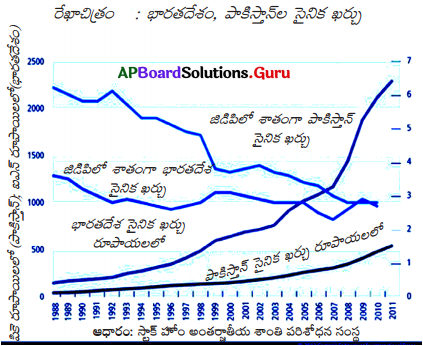
OX = సంవత్సరాలు, OY = ఖర్చు రూపాయలలో
జవాబు:
రేఖాచిత్రం ఇరుగు పొరుగు దాయాది దేశాలైన భారత్, పాకిస్థాన్ సైనిక ఖర్చును తెలియచేస్తుంది.
వారీ సైనిక ఖర్చును, వారి ఖర్చు జిడిపిలో ఎంత శాతమో తెలియచేస్తుంది.
రూపాయలలో చూసినట్లయితే పాకిస్థాన్ సైనిక ఖర్చు కన్నా భారతదేశ సైనిక ఖర్చు చాలా ఎక్కువగా ఉంది. జిడిపిలో శాతాలను పోల్చినట్లయితే కొంచెం దగ్గరగానే ఉన్నాయి.
భారత్ చాలా పెద్ద దేశం. కాబట్టి దేశ రక్షణ కోసం తన సైనిక ఖర్చును యింకా పెంచవలసిన అవసరం ఎంతైనా ఉంది.
ప్రశ్న 8.
పశ్చిమాసియా ఘర్షణల గురించి వివరించండి.
జవాబు:
పశ్చిమాసియా ఘర్షణలు :
1) యూరపు, ఆసియా మధ్య ప్రాంతాన్ని పశ్చిమ ఆసియా అంటారు. ఇదే ప్రాంతాన్ని మధ్యప్రాచ్యం అని కూడా అంటారు. అరబ్బులు, యూదుల మధ్య ఏర్పడిన ఘర్షణలను పశ్చిమ ఆసియా సంక్షోభమని అంటారు. ఇది ప్రధానంగా పాలస్తీనా ఆక్రమణకు సంబంధించినది. అరబ్బులు నివాసముంటున్న ఫాలస్తీనా రెండవ ప్రపంచ యుద్ధానికి ముందు బ్రిటిష్ నియంత్రణలో ఉండేది. అక్కడ ఉన్న జెరూసలెం యూదులు, క్రైస్తవులు, ముస్లిములందరికీ పవిత్రస్థలం.
2) యూదులు పాలస్తీనాని తమ ‘వాగ్దత్త భూమి’గా పరిగణిస్తారు. ప్రాచీనకాలంలో అక్కడి నుంచి వాళ్లను నిర్వాసితులను చేయడంతో వారు యూరపు, ఆసియా అంతటా వలసలు పోయారు.
3) ప్రపంచవ్యాప్తంగా ఉన్న యూదులను ఏకం చేసి, తమ మాతృభూమి అయిన పాలస్తీనాను తిరిగి పొంది, యూదులకు ప్రత్యేక దేశాన్ని నిర్మించటానికి యూదులలో ‘జియానిస్ట్ ఉద్యమం’ మొదలయ్యింది. 1945లో దీనికి పాశ్చాత్య శక్తుల మద్దతు కూడా లభించింది. అయితే అప్పటికే పాలస్తీనియన్లు (వీళ్లల్లో ఎక్కువమంది అరబ్బు ముస్లిములు) అక్కడ నివసిస్తున్నారు. దీంతో ఆ ప్రాంతం కోసం ఇరు ప్రజల మధ్య ఘర్షణ మొదలయ్యింది.
4) మధ్య ప్రాచ్యంలో, ప్రత్యేకించి అరబ్బు ద్వీపఖండంలో పెద్ద ఎత్తున చమురు నిల్వలను కనుగొనటంతో సమస్య మరింత సంక్లిష్టరూపం దాల్చింది. అమెరికా, రష్యాలు ఈ ప్రాంతాన్ని తమ ప్రాభవంలోకి తీసుకోవాలని ప్రయత్నించాయి. ఇతర దేశాలు దానిపై నియంత్రణ సాధించకుండా అడ్డుకున్నాయి.
ప్రశ్న 9.
ఈ క్రింది పట్టికను పరిశీలించి, న్యూక్లియర్ ఆయుధాల నిల్వ యొక్క ధోరణిని విశ్లేషించండి.

జవాబు:
ఈ పట్టిక మనకు ఏమి తెలియచేస్తుందంటే 1990 నుండి 2014 వరకు అమెరికా, రష్యాలు నిల్వ ఉంచిన ఆయుధాల సంఖ్యను ఇవ్వడం జరిగింది. 1990లో USA 10,904 ఆయుధాల నిల్వలను కలిగి ఉంటే రష్యా 37,000లకు కలిగి ఉంది. అంటే ఇది అమెరికా కంటే నాలుగు రెట్లు ఎక్కువ అని అర్థం. కాని 2014తో పోలిస్తే అమెరికా, రష్యాలు చాలా వరకు ఆయుధాల నిల్వలలో సమానంగా ఉన్నారు అని చెప్పవచ్చు. అయితే 1995 నుంచి 2014 వరకు మనం గమనించినట్లయితే ఆయుధాల నిల్వల సంఖ్య తగ్గుతూ వచ్చింది. దానికి కారణం రెండవ ప్రపంచ యుద్ధంలో జరిగిన తీవ్ర పరిణామాలు విధ్వంసాలు, మానవ నష్టం ఇవి అన్ని కారణాలుగా చెప్పవచ్చు. అంతేకాక ఐక్యరాజ్యసమితి USA, USSR లకు ఆయుధాల సంఖ్యను తగ్గించమని శాంతికి దోహదం చేయమని కోరటం జరిగింది. అంతే కాకుండా మూడవ ప్రపంచ యుద్ధం వస్తే ప్రపంచ వినాశనం తప్ప ఏమీ లేదని గమనించడం జరిగింది. దానికి తోడు NPT మీద మరియు CTBT ల మీద రెండు దశలు సంతకాలు చేయడం జరిగింది. ఈ రెండు దేశాలు ఆయుధ నిల్వల వలన జరిగే అనర్ధాలను కూడా గ్రహించి ఆయుధాల సంఖ్యను తగ్గించి శాంతికి కృషి చేయడం జరుగుతుంది.
ప్రశ్న 10.
భారత్, చైనాల మధ్య శాశ్వత శాంతి నెలకొనటానికి ఆ దేశాలు ఎటువంటి చర్యలు తీసుకోవాలి?
జవాబు:
- ఇరుదేశాలు సార్వభౌమత్వాన్ని పరస్పరం గౌరవించుకోవాలి.
- సరిహద్దు వివాదాలను శాంతియుతంగా పరిష్కరించుకోవాలి.
- దౌత్య సంబంధాలను మెరుగుపరచుకోవాలి.
- ఒక దేశాన్ని మరోదేశం పోటీదారుగా పరిగణించకూడదు.
- పంచశీల ఒప్పందం స్ఫూర్తిని ఇరుదేశాలే అనుసరించాలి.
- ఇరుదేశాలు సాంస్కృతిక అనుసంధానం ద్వారా స్నేహ సంబంధాలను పెంపొందించుకోవాలి.
ప్రశ్న 11.
ప్రస్తుత పరిస్థితులలో భారతదేశం, పొరుగు దేశాలతో మంచి స్నేహ సంబంధాలు నెలకొల్పుటకు తగు సలహాలు రాయండి.
జవాబు:
- సామరస్య ధోరణితో సమస్యల పరిష్కరించుకోవాలి.
- పరస్పర గౌరవంతో మెలగాలి.
- ప్రాంతీయ సహకార సంస్థలను బలోపేతం చేయాలి.
- దేశాల మధ్య ఆర్థిక సంబంధాలను బలోపేతం చేయాలి.
- ప్రకృతి వైపరీత్యాలు సంభవించినప్పుడు సహకారాన్ని అందించాలి
- ఉగ్రవాదానికి వ్యతిరేకంగా సంఘటిత పోరు సాగించాలి.
- ఆయుధాలు తగ్గించుకోవాలి.
- నూతన సాంకేతిక ఆవిష్కరణల పరస్పర బదిలీ జరగాలి.
- సాంస్కృతిక ఉత్సవాలను నిర్వహించాలి.

ప్రశ్న 12.
ప్రపంచ శాంతికి విఘాతం కలిగించే ప్రస్తుత పరిస్థితులను వివరించండి.
జవాబు:
- టెర్రరిజం
- యుద్ధాలు
- ఆయుధ పోటీ
- ఆక్రమణలు
- మతతత్వం
- వనరుల దోపిడి
- అభివృద్ధి చెందుతున్న దేశాల వ్యవహారాల్లో, అభివృద్ధి చెందిన దేశాలు జోక్యం చేసుకోవటం
- దురహంకారపూరిత జాతీయవాదం
ప్రశ్న 13.
క్రింది పట్టికను పరిశీలించి, విశ్లేషించండి.
అమెరికా, రష్యా అణ్వాయుధ నిల్వలు
| సంవత్సరం | అమెరికా | రష్యా |
| 1965 | 33,000 | 10,000 |
| 1975 | 25,000 | 32,000 |
| 1985 | 24,000 | 45,000 |
| 1995 | 12,000 | 25,000 |
| 2005 | 11,000 | 16,000 |
జవాబు:
రెండవ ప్రపంచ యుద్ధానంతర కాలంలో రెండు ప్రధాన సైద్ధాంతిక, రాజకీయ శిబిరాలు ఏర్పడ్డాయి. యుఎస్ఎస్ ఆర్ నేతృత్వంలో కమ్యూనిస్టు శిబిరం, అమెరికా నేతృత్వంలో పెట్టుబడిదారీ శిబిరం. ఈ రెండు శిబిరాల మధ్య, రెండవ ప్రపంచ యుద్ధం తర్వాత 45 సంవత్సరాలపాటు ఒక వింత యుద్ధం జరిగింది. ప్రపంచంలో ఏ రెండు చిన్న దేశాల మధ్య ఘర్షణ తలెత్తినా ఈ అగ్రరాజ్యాలు చెరొక పక్షం వహించి మాటలు, ప్రచారం ద్వారా యుద్ధం చేశాయి. సంప్రదాయ యుద్ధాలలో మాదిరి నిజమైన పోరు లేదు కాబట్టి దీనిని ప్రచ్ఛన్న యుద్ధం అన్నారు. ఈ ప్రచ్ఛన్న యుద్ధం వల్ల అమెరికా, రష్యాల మధ్య తీవ్ర ఘర్షణపూరిత వాతావరణం ఉండేది. ఆ నేపథ్యంలో అవి అణ్వాయుధ నిల్వలను సమకూర్చుకున్నాయి.
పై పట్టికలో ఈ రెండు అగ్రరాజ్యా ల అణ్వాయుధ నిల్వల గురించిన సమాచారం ఇవ్వబడింది. దీనిని పరిశీలిస్తే, 1965 నుండి 2005 వరకు అమెరికా అణ్వాయుధ నిల్వలు క్రమేపి తగ్గుతూ వచ్చాయి. రష్యా విషయానికి వస్తే, 1965 నుండి 1985 అణ్వాయుధ నిల్వలు భారీగా పెరుగుతూపోయి, 1995 నుండి 2005 వరకు తగ్గుతూ వచ్చాయి.
రెండవ ప్రపంచ యుద్ధం తర్వాత ఏర్పడిన ఈ రెండు అగ్రరాజ్యాల మధ్య సైనిక ఆధిపత్యం, ఆర్థిక ఆధిపత్యం కోసం జరిగిన పోరుగా భాగంగా తొలుత అణ్వాయుధ నిల్వలను పెంచుకున్నాయి. తర్వాతి కాలంలో యుద్ధకాంక్ష, ఆయుధ పోటీ ప్రపంచ వినాశనానికి హేతువులు కాగలవన్న వాస్తవాన్ని గ్రహించాయి. అణు యుద్ధమే చెలరేగితే ఏ దేశమూ గెలవదని, మొత్తం నాగరికతలకే ముప్పు తెచ్చే స్థాయిలో మానవ నష్టం జరుగుతుందని ఈ శిబిరాలకు తెలుసు. అదీ కాక, అంతర్జాతీయ ఒత్తిడుల మూలంగా, ఇవి తమ ఆయుధ నిల్వలను తగ్గించుకుంటూ వచ్చాయి.
ప్రశ్న 14.
నేడు అలీనోద్యమ దేశాల మధ్య విభేదాలను పరిష్కరించడానికి తగు సలహాలను రాయండి.
జవాబు:
అలీనోద్యమ దేశాల మధ్య విభేదాలను పరిష్కరించడానికి తగు సలహాలు :
- ఒకరి సర్వసత్తాకతను, భౌగోళిక సమగ్రతను మరొకరు గౌరవించుకోవాలి.
- ఇతర దేశాల అంతర్గత వ్యవహారాలలో జోక్యం చేసుకోకపోవడం మంచిది.
- దాడులకు దిగకపోవడం, వివాదాలను పరస్పర అవగాహనతోను, సామరస్య ధోరణితోనూ పరిష్కరించుకోవాలి.
- పరస్పర గౌరవం, సహకారాల కోసం కృషి చేయాలి.
- శాంతియుత సహజీవనాన్ని ప్రోత్సహించాలి.
- అలీనోద్యము దేశాల మధ్య ఆర్థిక సంబంధాలను బలోపేతం చేసుకోవాలి.
- ఈ దేశాల మధ్య ప్రకృతి వైపరీత్యాలు సంభవించినప్పుడు సహకారాన్ని అందించుకోవాలి.
ప్రశ్న 15.
భారత్ – పాకిస్తాన్ సంబంధాల గురించి వివరించండి.
జవాబు:
పాకిస్తాన్తో భారతదేశ సంబంధాలు :
- విభజన తరువాత రెండు దేశాల మధ్య నిరంతరం ఘర్షణలు కొనసాగుతున్నాయి. కాశ్మీరు రెండింటి మధ్య ముఖ్యమైనవివాదాంశంలుగా పరిణమించింది.
- రెండు దేశాల మధ్య మొదటి యుద్ధం కాశ్మీరు కోసం 1947-48 మధ్య జరిగింది. అయితే ఇది సమస్యను పరిష్కరించలేదు. యుద్ధం వల్ల కాశ్మీరు రెండుగా విభజింపబడింది. పాకిస్తాన్ ఆక్రమిత కాశ్మీరు (పిఓకె), భారతదేశంలోని జమ్మూ-కాశ్మీర్ రాష్ట్రం. ఈ రెండింటిని వాస్తవాధీన రేఖ విడదీస్తోంది.
- 1965లో భారతదేశానికి ప్రధాన మంత్రిగా లాల్ బహదూర్ శాస్త్రి ఉన్నాడు. పాకిస్తాన్లో సైనిక నియంత జనరల్ ఆయుబ్ ఖాన్ అధికారంలో ఉన్నాడు. కాశ్మీరుని విముక్తి చెయ్యటం అన్న పేరుతో భారతదేశంపై దాడి చేస్తే కాశ్మీరులో తిరుగుబాటు సంభవిస్తుందని ఆయుబ్ ఖాన్ ఆశించాడు, అయితే కాశ్మీరు ప్రజలు ఇందుకు స్పందించలేదు.
- భారతదేశ యుద్ధం చేయడంతో కాశ్మీరు నుంచి పాకిస్తాన్ వెనక్కి తగ్గక తప్పలేదు. కాల్పుల విరమణకు అంగీకరించేట్లు రెండు దేశాలను ఐక్యరాజ్య సమితి సెక్రటరీ జనరల్ అయిన యుథాంట్ ఒప్పించాడు.
- కాల్పుల విమరణ తరువాత 1966లో తాష్కెంట్ లో రెండు దేశాల ప్రధాన మంత్రులు ఒక ఒప్పందంపై సంతకం చేశారు.
- 1971 డిసెంబరులో పాకిస్తాన్తో పూర్తిస్థాయి యుద్ధం చెలరేగింది. తూర్పు పాకిస్తాన్ విముక్తి చెంది బంగ్లాదేశ్ గా ఏర్పడింది. దీనితో భారతదేశం కాల్పుల విరమణ ప్రకటించటంతో యుద్ధం ముగిసింది. తరువాత జుల్ఫికర్ ఆలి భుట్టో, ప్రధానమంత్రి ఇందిరాగాంధి నేతృత్వంలో రెండు దేశాల మధ్య సిమ్లా ఒప్పందం కుదిరింది.
- 1971 యుద్ధం తరువాత రెండు దేశాల మధ్య బహిరంగ యుద్ధమేదీ జరగలేదు. కాని సరిహద్దు వెంట అనేకసార్లు కాల్పులు, ఘర్షణలు చోటు చేసుకున్నాయి. మీరు ‘కార్గిల్ యుద్ధం’ గురించి విని ఉంటారు. 1999లో పాకిస్తాన్ సైన్యం సహాయంతో భారత వ్యతిరేక తీవ్రవాదులు భారత భూ భాగాలను ఆక్రమించుకోగా సైనిక చర్యతో వాళ్లను తిప్పికొట్టాల్సి వచ్చింది.
- భారతదేశ సరిహద్దు రాష్ట్రాలైన పంజాబు, జమ్ము-కాశ్మీరులలో పాకిస్తాన్ వేర్పాటు ఉద్యమాలను బలపరుస్తూ వస్తోంది. ఇటువంటి ఉద్యమాలకు మద్దతు ఇవ్వటమే కాకుండా మతతత్వ తీవ్రవాదులకు శిక్షణనిచ్చి భారతదేశంలో సమస్యలు సృష్టించడానికి పాకిస్తాన్ నిరంతరం ప్రయత్నిస్తోందని భారతదేశం ఆరోపిస్తుంది.
- అందుకు బదులుగా భారతదేశం తమ దేశంలో అస్థిరత సృష్టిస్తోందని అణ్యాయుధాలు, ఇతర ఆయుధాల నిల్వల ద్వారా, సైనిక చర్య ద్వారా తనను నిత్యం బెదిరిస్తోందని పాకిస్తాన్ ఆరోపణలు చేస్తుంది.
- అదే సమయంలో సంస్కృతి, నాగరికతలను పంచుకున్న సుదీర్ఘ చరిత్ర ఇరు దేశాలకు ఉండటంతో స్వార్ధపరశక్తులు ద్వేషాన్ని పెంపొందించినప్పటికీ వాటిని అధిగమించటానికి పాకిస్తాన్, భారతదేశ ప్రజలు ప్రయత్నిస్తున్నారు.
- వాణిజ్యం, క్రీడలు, సినిమాలు, పర్యటన, సాంస్కృతిక అనుసంధానాల ద్వారా స్నేహవారధులు నిర్మించటానికి ప్రయత్నిస్తున్నారు. రెండు దేశాలలో లౌకికవాదం, ప్రజాస్వామ్యం, స్వేచ్ఛ ఉంటే ఇది ఇరు దేశ ప్రజల మధ్య మరింత అవగాహన, సహకారం ఏర్పడటానికి దోహదం చేస్తుందని భారతీయులు, పాకిస్తానీ ప్రజలు భావిస్తున్నారు.
- ఇలాంటి తరుణంలో కాశ్మీరుకు ప్రతిపత్తి పోదా కల్పించే 370 ఆర్టికల్ ను ప్రస్తుత ప్రభుత్వం (2019) రద్దు చేయటంతో పాకిస్తాన్ మన దేశంపై అనేక అర్థం లేని ఆరోపణలు చేస్తూ, ఇరు దేశాల సంబంధాలను మరింత క్షిణించేలా చేస్తుంది.

ప్రశ్న 16.
ప్రపంచం మీద ప్రచ్ఛన్న యుద్ధ ప్రభావమెటువంటిది?
జవాబు:
ప్రత్యర్థి శిబిరాలు విధ్వంసకర ఆయుధాల నిల్వలను పెంచుకుంటూ పోవటంతో ప్రపంచం అణ్వాయుధ యుద్ధ విధ్వంస నీడలో బితుకుబితుకుమంటూ ఉంది. అన్ని దేశాల ప్రజలు యుద్ధ భయంతో గడపసాగారు. రెండు అగ్ర రాజ్యాల మధ్య యుద్ధం అనివార్యమనిపించిన సందర్భాలు అనేకం ఎదురైనప్పటికీ దౌత్యంతో వీటిని ఎలాగో నివారించగలిగారు. రష్యా తమ దేశంలోని అమెరికాకి చెందిన గూఢచర్య విమానాన్ని కూల్చివెయ్యటం, క్యూబాలో రష్యా ఆయుధ నిల్వలను అమెరికా గుర్తించటం, కొరియా, గల్ఫ్ యుద్దాల వంటి సందర్భాలలో పలుమార్లు ప్రపంచం యుద్ధం అంచున నిలిచింది.
ప్రశ్న 17.
అలీనోద్యమ స్థాపనకు దారి తీసిన అంశాలేవి?
జవాబు:
1950లలో ప్రపంచం రెండు ప్రత్యర్థి శిబిరాల మధ్య తీవ్ర ఆయుధీకరణకు లోనయ్యింది. రెండు అగ్రరాజ్యాల మధ్య సైనిక ఆధిపత్యం, సైద్ధాంతిక విరోధాలు, ఆర్థిక ఆధిపత్యం కోసం జరిగిన పోటీలు కారణంగా ప్రపంచం రెండు ధృవాలుగా విడిపోయింది. ఈ రెండు పక్షాలలో దేనివైపునా లేకుండా ఉండటానికి అంతగా అవకాశాలు లేకపోయినా అటువంటి ప్రయత్నం ఒకటి జరిగింది. అగ్ర రాజ్యాల మధ్య పోటీ వల్ల ఇటీవల వలసపాలన నుంచి విముక్తి పొందిన దేశాల సమస్యలైన పేదరికం, అనారోగ్యం, అసమానత్వం, వలసవాదం వంటివి ఏవీ పరిష్కారం కాలేదు. ఇటువంటి అంశాలు అలీనోద్యమ స్థాపనకు దారితీశాయి.
ప్రశ్న 18.
భారత్-పాకు తమ ఆదాయంలో అధిక మొత్తాన్ని ఆయుధాల సేకరణ కోసం ఖర్చు చేయుటలో కారణాలేమిటో చెప్పగలవా?
జవాబు:
భారతదేశ సరిహద్దు రాష్ట్రాలైన పంజాబు, జమ్ము-కాశ్మీరులలో పాకిస్తాన్ వేర్పాటు ఉద్యమాలను బలపరుస్తూ వస్తోంది. ఇటువంటి ఉద్యమాలకు మద్దతు ఇవ్వటమే కాకుండా మతతత్వ తీవ్రవాదులకు శిక్షణనిచ్చి భారతదేశంలో సమస్యలు సృష్టించటానికి పాకిస్తాన్ నిరంతరం ప్రయత్నిస్తోందని భారతదేశం ఆరోపిస్తుంది. అందుకు బదులుగా భారతదేశం తమ దేశంలో అస్థిరత సృష్టిస్తోందని అణ్వాయుధాలు, ఇతర ఆయుధాల నిల్వల ద్వారా, సైనిక చర్య ద్వారా తనను నిత్యం బెదిరిస్తోందని పాకిస్తాన్ ఆరోపణలు చేస్తుంది. దీని ఫలితంగా రెండు దేశాలు ఒకదానికి వ్యతిరేకంగా మరొకటి ఆయుధాలను సమకూర్చుకోటానికి పెద్ద ఎత్తున నిధులను ఖర్చు చేస్తున్నాయి. రెండు దేశాల దగ్గర అణ్వాయుధాలు ఉన్నాయి. రెండవదేశం తమపై దాడికి దిగకుండా ఈ అణ్వాయుధాలు నిరోధిస్తాయని రెండు దేశాలూ నమ్ముతున్నాయి.
ప్రశ్న 19.
1965లో ఇండియా – పాకిస్తాన్ల మధ్య యుద్ధం ముగిసిన తరువాత లాల్ బహాదుర్ శాస్త్రి వెలువరించిన అభిప్రాయాలేమిటి?
జవాబు:
“మన దేశ ప్రత్యేకత ఏమంటే ఇక్కడ హిందువులు, ముస్లింలు, క్రైస్తవులు, సిక్కులు, పార్సీలు, ఇంకా ఎన్నో మతాల ప్రజలు ఉన్నారు. ఇక్కడ గుడులు, మసీదులు, గురుద్వారాలు, చర్చిలు ఉన్నాయి. అయితే వీటిని మనం రాజకీయాల్లో జోక్యం చేసుకోనివ్వం…. భారతదేశానికి, పాకిస్తాన్ కి మధ్య ఉన్న తేడా ఇదే. పాకిస్తాన్ తనని తాను ఇస్లామిక్ దేశంగా పేర్కొంటూ మతాన్ని రాజకీయ అంశంగా ఉపయోగించుకుంటోంది. భారతదేశ ప్రజలు ఏ మతాన్ని అయినా ఆచరించవచ్చు, ఏ విధంగానైనా దేవుడిని ఆరాధించవచ్చు. రాజకీయాలకు వచ్చేసరికి ప్రతి ఒక్కరూ భారతీయులే.”
ప్రశ్న 20.

రేఖాచిత్రంను పరిశీలించి, 1945 నుండి అమెరికా, రష్యాలు ఆయుధ నిల్వలు ఏ విధంగా పెంచుకుంటూ వచ్చాయో వ్యాఖ్యానించుము.
జవాబు:
రెండవ ప్రపంచ యుద్ధం తరువాత రెండు ప్రధాన సైద్ధాంతిక, రాజకీయ శిబిరాలు ఏర్పడ్డాయి. అవే యు.ఎస్.ఎస్.ఆర్ నేతృత్వంలో కమ్యూనిస్ట్ శిబిరం, అమెరికా నేతృత్వంలో ప్రజాస్వామిక పెట్టుబడిదారీ శిబిరం. సమానత్వం అన్న భావన, ప్రభుత్వ నియంత్రణతో అభివృద్ధి అనే భావనలను రష్యా అవలంబించింది. బహుపార్టీ ప్రజాస్వామ్యం, ప్రైవేటు – పెట్టుబడిదారులతో నియంత్రణ ద్వారా అభివృద్ధి సాధించాలని అమెరికా భావించింది. తూర్పు యూరప్ అనగా పోలాండ్, హంగరీ, తూర్పు జర్మనీ మరియు చైనా, వియత్నాంలు కూడా రష్యాకు సన్నిహితంగా ఉండేవి. పశ్చిమ యూరప్ దేశాలు బ్రిటన్, ఫ్రాన్స్, స్పెయిన్లు అమెరికాకు మద్దతుగా ఉండేవి. ప్రపంచంలోని దేశాలను తమ తమ శిబిరాలలో చేర్చుకోవటానికి ఈ రెండు అగ్రరాజ్యాలు పోటీపడుతూ ప్రచ్ఛన్న యుద్ధాన్ని కొనసాగించాయి. ఈ ప్రచ్ఛన్న యుద్ధంలో భాగంగా ఈ రెండు దేశాలు ఆయుధ సమీకరణలో కూడా పోటీ పడుతున్నాయని పై రేఖాచిత్రం ద్వారా తెలియుచున్నది.
పై రేఖాచిత్రం గమనించినట్లయితే 1945లో ఆయుధాల సంఖ్య చాలా తక్కువగా 5000 కంటే తక్కువగా కనిపిస్తుంది. 1955 నుండి అమెరికా, రష్యాల అయుధ సమీకరణ పెరుగుతూనే ఉంది. అమెరికా 1955 నుండి 1965 మధ్యలో ఆయుధాలను అత్యధికంగా 30,000కు పైగా సేకరించింది. ఆ తరువాత కాలంలో అమెరికా యొక్క ఆయుధ సేకరణ తగ్గుముఖం పట్టిందని తెలుస్తుంది. రష్యా యొక్క ఆయుధ సేకరణ క్రమంగా పెరుగుతూ, 1985 నాటికి అత్యధికంగా 45,000 అణ్వాయుధాలను సేకరించింది. ఆ తరువాత కాలంలో అమెరికా, రష్యాల ఆయుధ సేకరణ తగ్గుతూ వచ్చింది.
1985 తరువాత రష్యా అధ్యక్షుడు గోర్బచేవ్ ఆయుధ పోటీకి స్వస్తి పలకాలని “గ్లాస్ నోస్”, “పెరిస్తాయికా” అనే సంస్కరణలను చేపట్టినాడు. గోర్బచేవ్ ఉదారవాద సిద్ధాంతాల మూలంగా అమెరికా, రష్యాల ఆయుధ సేకరణ తగ్గుతూ వచ్చి, 1991 నాటికి ప్రచ్ఛన్న యుద్ధం ముగిసింది.
ప్రశ్న 21.

పై యూరప్ పటంను గమనించి నాటో స్థాపన దేశాలు ఏమిటి? ప్రవేశించిన దేశాలేమిటి? వార్సా ఒప్పంద దేశాలేమిటి? వార్సాలోకి ప్రవేశించిన దేశాలేమిటి? విరమించుకున్న దేశాలేమిటో వివరించుము.
జవాబు:
ప్రచన్నయుద్ధంలో సైనిక ఒప్పందాలతో కూడిన పై పటంను పరిశీలించగా ఈ క్రింది విషయాలు తెలియుచున్నవి.
1) నాటో (NATO) ను 1942లో ఏర్పాటు చేశారు. నాటో స్థాపనలో సభ్యులుగా ఉన్న దేశాలు :
ఎ) స్వీడన్ బి) ఇంగ్లాండు సి) పోర్చుగల్ డి) ఐలాండ్ ఇ) డెన్మార్క్ ఎఫ్) నెదర్లాండ్ జి) బెల్జియం హెచ్) లర్జెంబర్గ్ ఐ) ఫ్రాన్స్ జె) మొనాకో 3) ఇటలీ.
2) ఆ తరువాత నాటోలో సభ్యులుగా చేరిన దేశాలు :
ఎ) గ్రీస్, 1952 బి) టర్కీ, 1952 సి) పశ్చిమ జర్మనీ, 1955 డి) స్పెయిన్, 1982
3) వార్సా స్థాపన 1966లో జరిగింది. వార్సా స్థాపనలోనే సభ్యులుగా ఉన్న దేశాలు :
ఎ) సోవియట్ యూనియన్ (రష్యా) బి) పోలాండ్ సి) చెకోస్లోవేకియా డి) హంగరీ ఇ) రుమేనియా ఎఫ్) బల్గేరియా.
4) ఆ తరువాత వార్సాలో చేరిన దేశం : తూర్పు జర్మనీ 1956
5) వార్సా నుండి సభ్యత్వాన్ని విరమించుకున్న దేశం : అల్బేనియా 1968

ప్రశ్న 22.
వలస పాలనా కాలంలో రెండు దేశాల మధ్య సరిహద్దుగా మెక్ మోహన్ రేఖ గీశారు. నెహ్రూ దానిని అంగీకరించాడు. చైనా, భారతదేశాల మధ్యనున్న టిబెట్ స్వతంత్ర బఫర్ ప్రాంతంగా ఉండేది. అయితే ఒకప్పటి చైనా సామ్రాజ్యంలో టిబెట్ పరాధీన దేశంగా ఉందని పేర్కొంటూ 1950లో టిబెట్ ని చైనా తనలో కలిపేసుకుంది. దీంతో భారత – చైనా దేశాల మధ్య బఫర్ ప్రాంతం లేకుండాపోయింది. టిబెట్లో జరిగిన తిరుగుబాటుని చైనా అణిచివేసింది. దలైలామాతో సహా వేలాది టిబెటన్లు తప్పించుకుని భారతదేశంలో ఆశ్రయం తీసుకున్నారు. భారతదేశం దలైలామాకి ఆశ్రయం ఇచ్చింది. దీంతో భారత్ – చైనాల మధ్య వైరుధ్యం మొదలయ్యింది. భారతదేశాన్ని చైనా ప్రత్యర్థిగా భావించటం మొదలు పెట్టింది. అంతకుముందే రెండు దేశాల మధ్య సరిహద్దు వివాదం ఏర్పడింది. లడఖ్ ప్రాంతంలోని ఆక్సాయి – చిన్ ప్రాంతం, అరుణాచల్ ప్రదేశ్ లోని చాలా ప్రాంతం తమదని చైనా పేర్కొంది. అనేక ప్రయత్నాలు, సుదీర్ఘ చర్చలు తరువాత కూడా ఈ వివాదాలు ఈనాటికీ పరిష్కృతం కాలేదు.
ప్రశ్న : భారత్ – చైనా సంబంధాల స్థితి గురించి వ్యాఖ్యానించండి.
జవాబు:
- మె మోహన్ రేఖ భారత్, చైనాల మధ్య సరిహద్దు రేఖ.
- చైనా, భారత్ మధ్య ఉన్న టిబెటను చైనా కలిపేసుకుంది.
- టిబెట్ నుండి వచ్చిన దలైలామాకు భారతదేశం ఆశ్రయం ఇచ్చింది.
- భారతదేశాన్ని చైనా ప్రత్యర్థిగా భావిస్తున్నది.
- లడఖ్ ప్రాంతంలోని ఆక్సాయి, చిన్ ప్రాంతం ; అరుణాచల్ ప్రదేశ్ లోని చాలా ప్రాంతం తమదని చైనా పేర్కొంది.
- దానికి భారతదేశం అంగీకరించలేదు
- ఆ సమస్యలు పరిష్కృతం కాలేదు.
- అయితే శాంతి, సామరస్యాలు నెలకొనేలా ఇరుదేశాలు చర్యలు తీసుకుంటున్నాయి.
ప్రశ్న 23.
ఇచ్చిన రేఖాచిత్రాన్ని పరిశీలించి క్రింది ప్రశ్నలకు జవాబులు వ్రాయండి.

ప్ర: 1. పై గ్రాఫ్ దేనిని సూచిస్తుంది?
జవాబు:
పై గ్రాఫ్ అమెరికా, రష్యాల వద్ద ఉన్న అణ్వాయుధ నిల్వలు సూచిస్తోంది.
2. 1985లో ఏ దేశం అత్యధిక సంఖ్యలో ఆయుధాలను కలిగి ఉంది?
జవాబు:
1985 నాటికి రష్యా అత్యధిక అణ్వాయుధాలు కల్గి ఉంది.
3. 1945 తర్వాత USA, USSR మధ్య ఆయుధపోటీ ఎందుకు సంభవించింది?
జవాబు:
1945 తర్వాత ప్రచ్ఛన్న యుద్ధంలో భాగంగా ఆయుధపోటీ సంభవించింది.
4. 2005లో ఏ దేశం వద్ద ఆయుధాలు తక్కువగా ఉన్నాయి?
జవాబు:
2005 లో అమెరికా వద్ద తక్కువ అణ్వాయుధ నిల్వలు ఉన్నాయి.
ప్రశ్న24.
ఇచ్చిన రేఖాచిత్రాన్ని పరిశీలించి క్రింది ప్రశ్నలకు జవాబులు వ్రాయండి.

1) ఈ సమాచారాన్ని ప్రచురించిన సంస్థ పేరేమి?
జవాబు:
సమాచారాన్ని ప్రచురించిన సంస్థ – ‘స్టాక్ హోం అంతర్జాతీయ శాంతి పరిశోధన సంస్థ’.
2) 2000 సంవత్సరం నాటికి ఏ దేశం తన జి.డి.పి.లో ఎక్కువ శాతం సైన్యంపై ఖర్చు చేస్తున్నది?జవాబు:
పాకిస్తాన్.
3) GDP పరంగా చూస్తే ఏ దేశం అత్యధికంగా సైనిక ఖర్చు చేసింది?
జవాబు:
GDP లో శాతంగా చూస్తే పాకిస్తాన్ అత్యధికంగా సైనిక ఖర్చు చేసింది.
4) పై గ్రాఫ్ దేనిని సూచిస్తుంది?
జవాబు:
పై గ్రాఫ్ భారత్, పాకిస్తాన్ దేశాల సైనిక ఖర్చును సూచిస్తుంది.
![]()
![]()
![]()
![]()
![]()
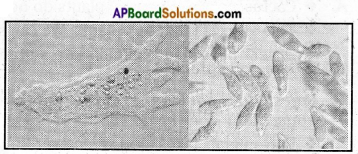

![]()

